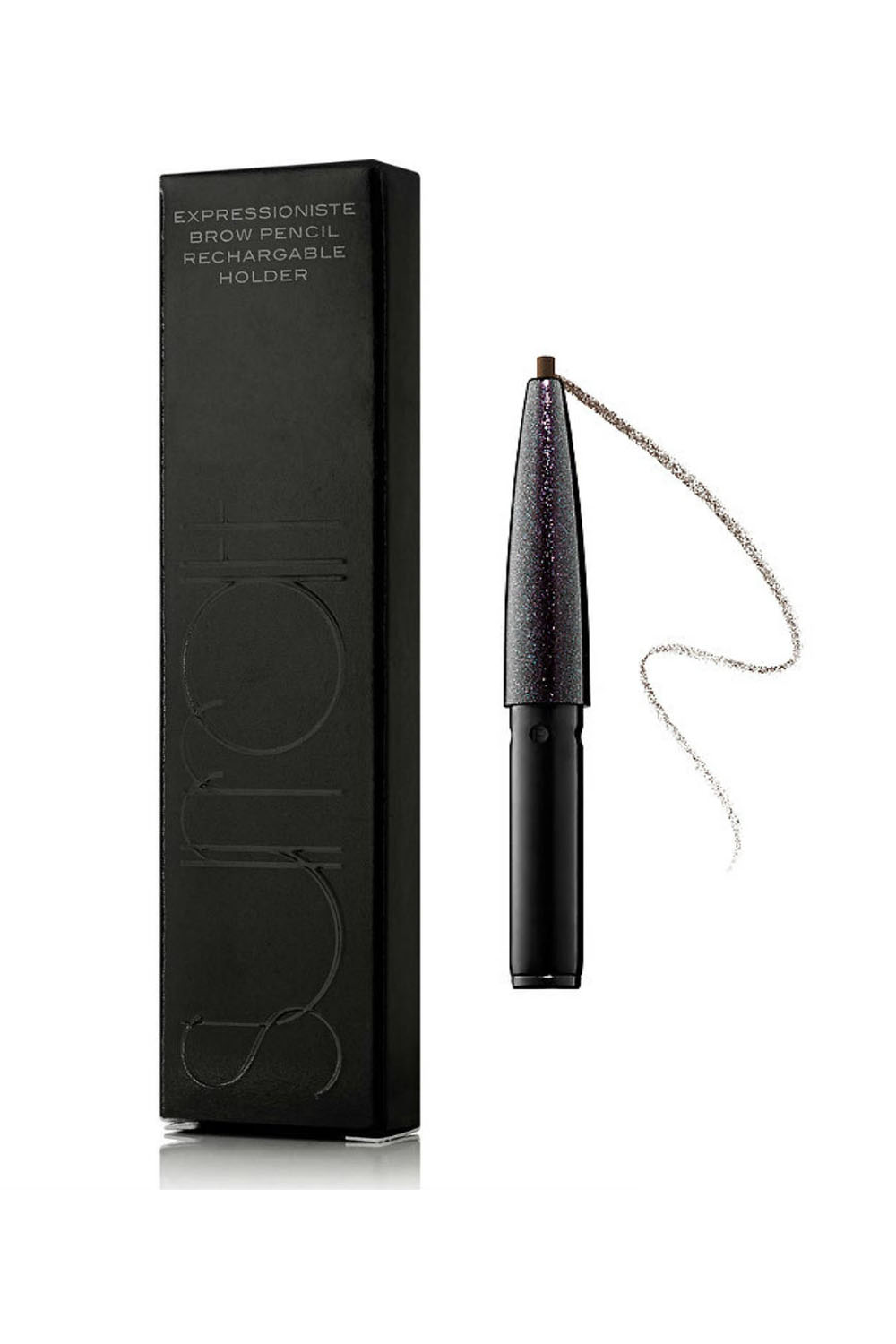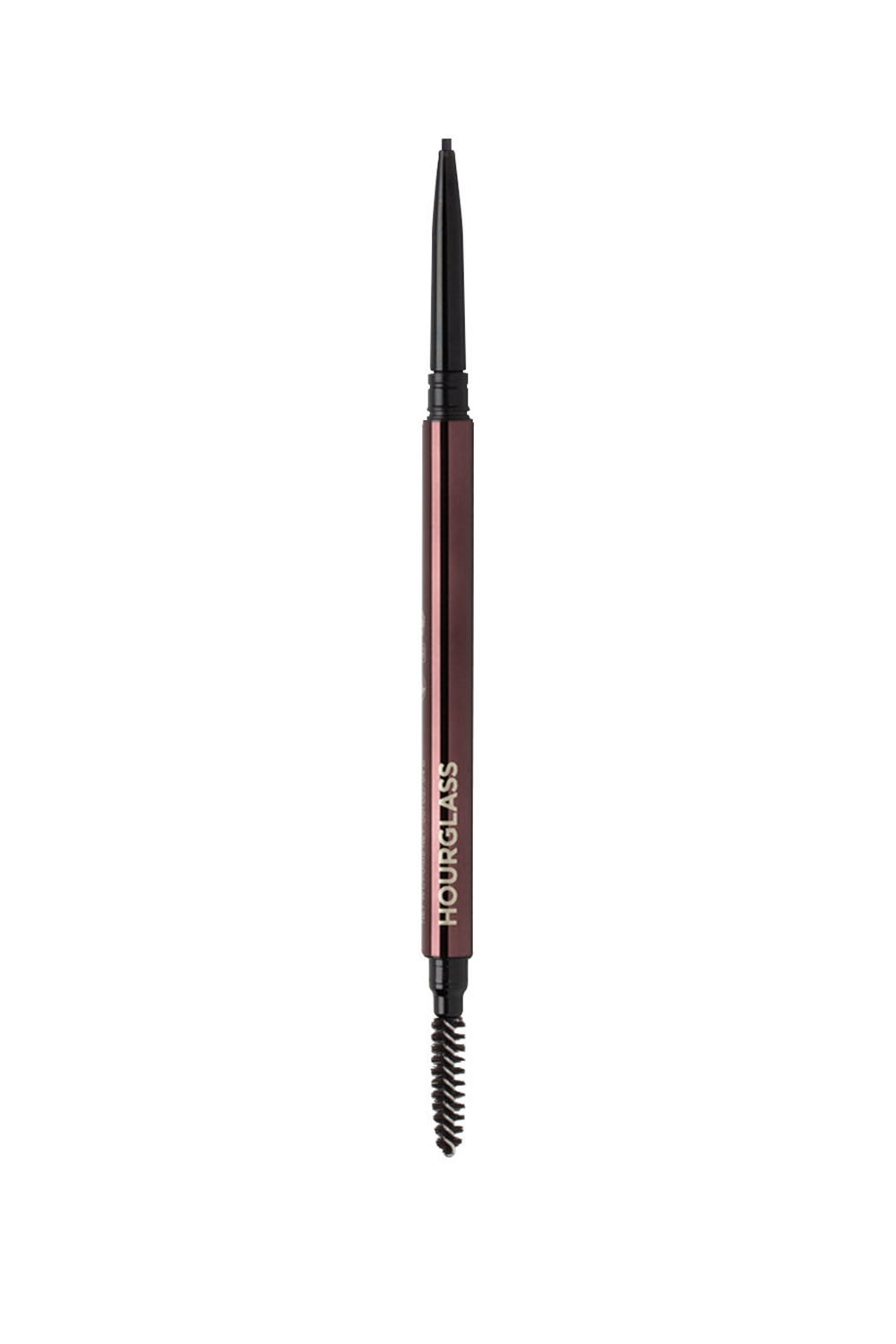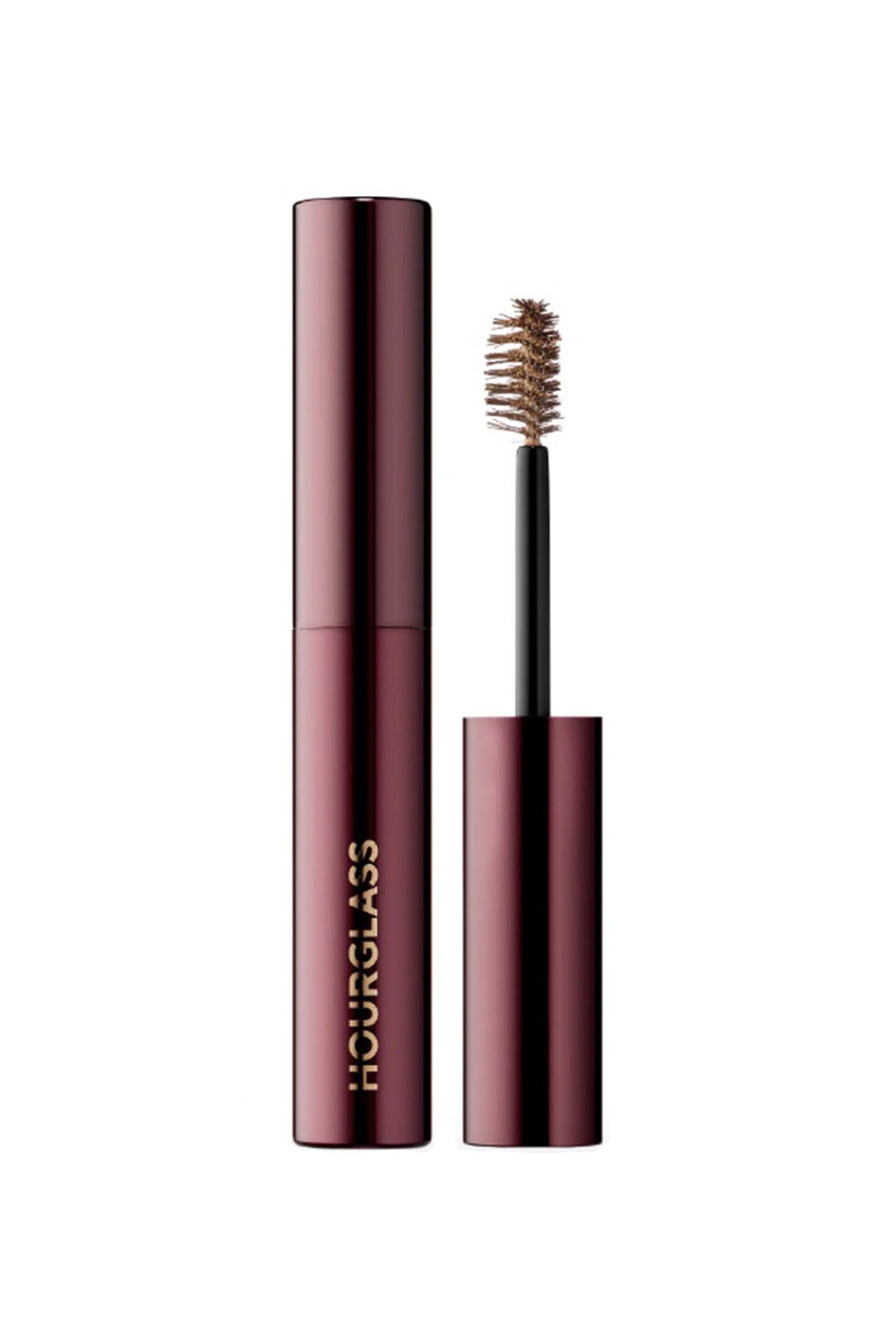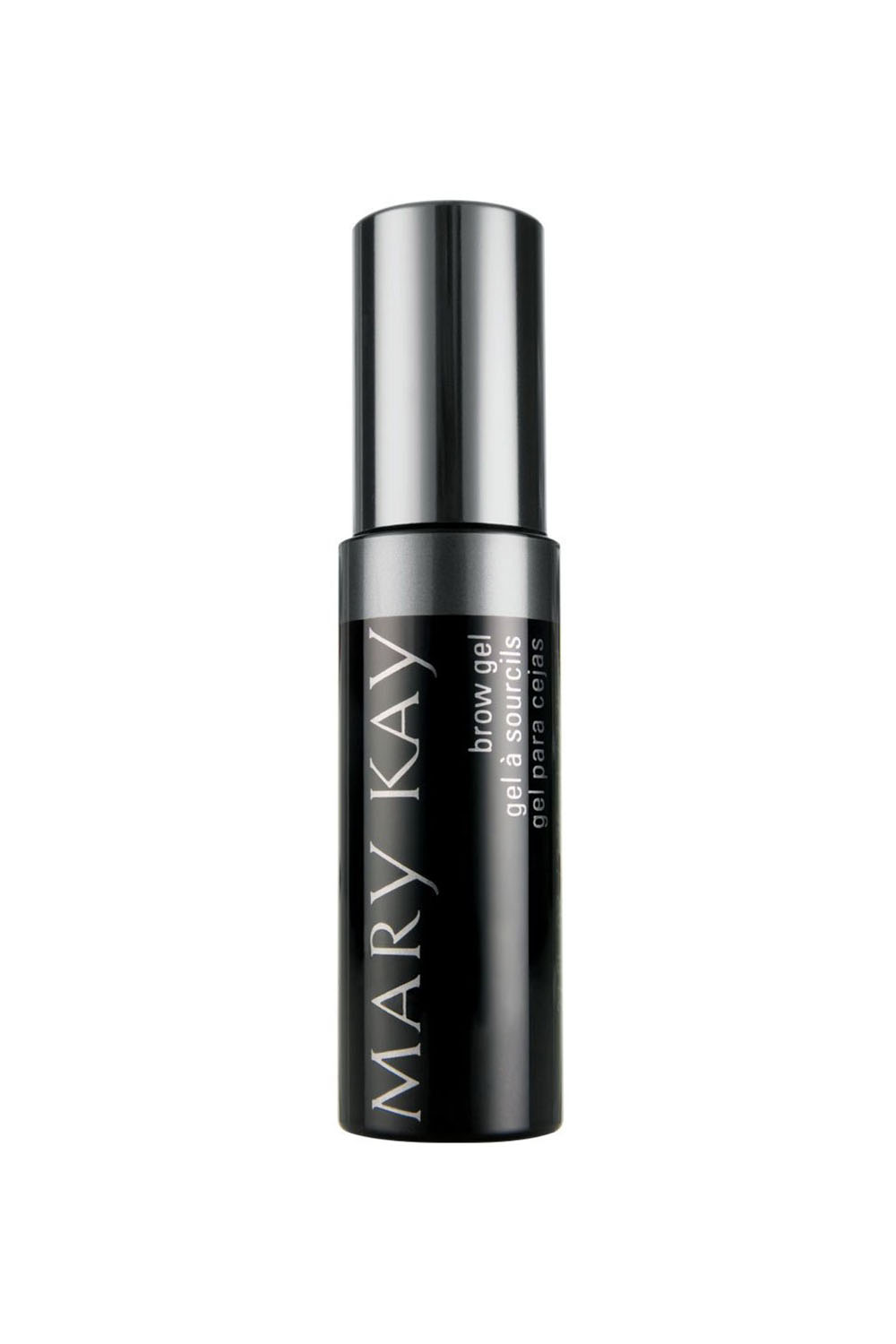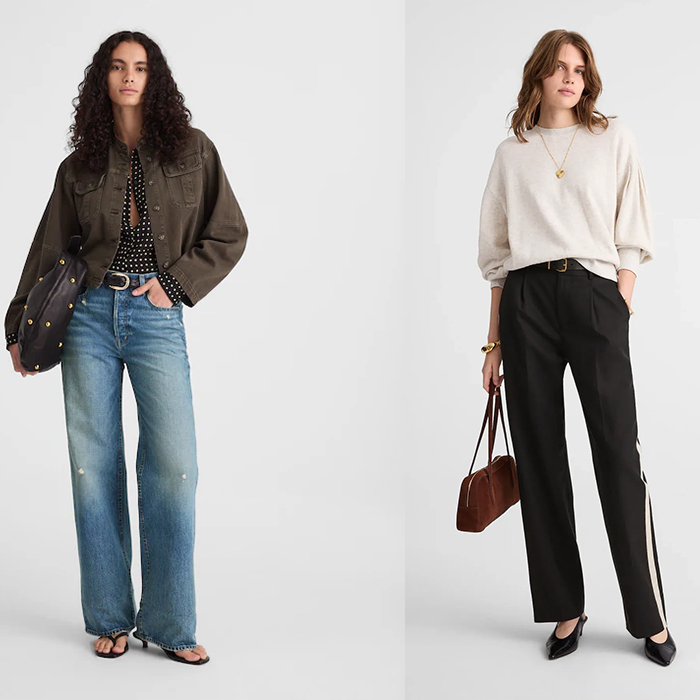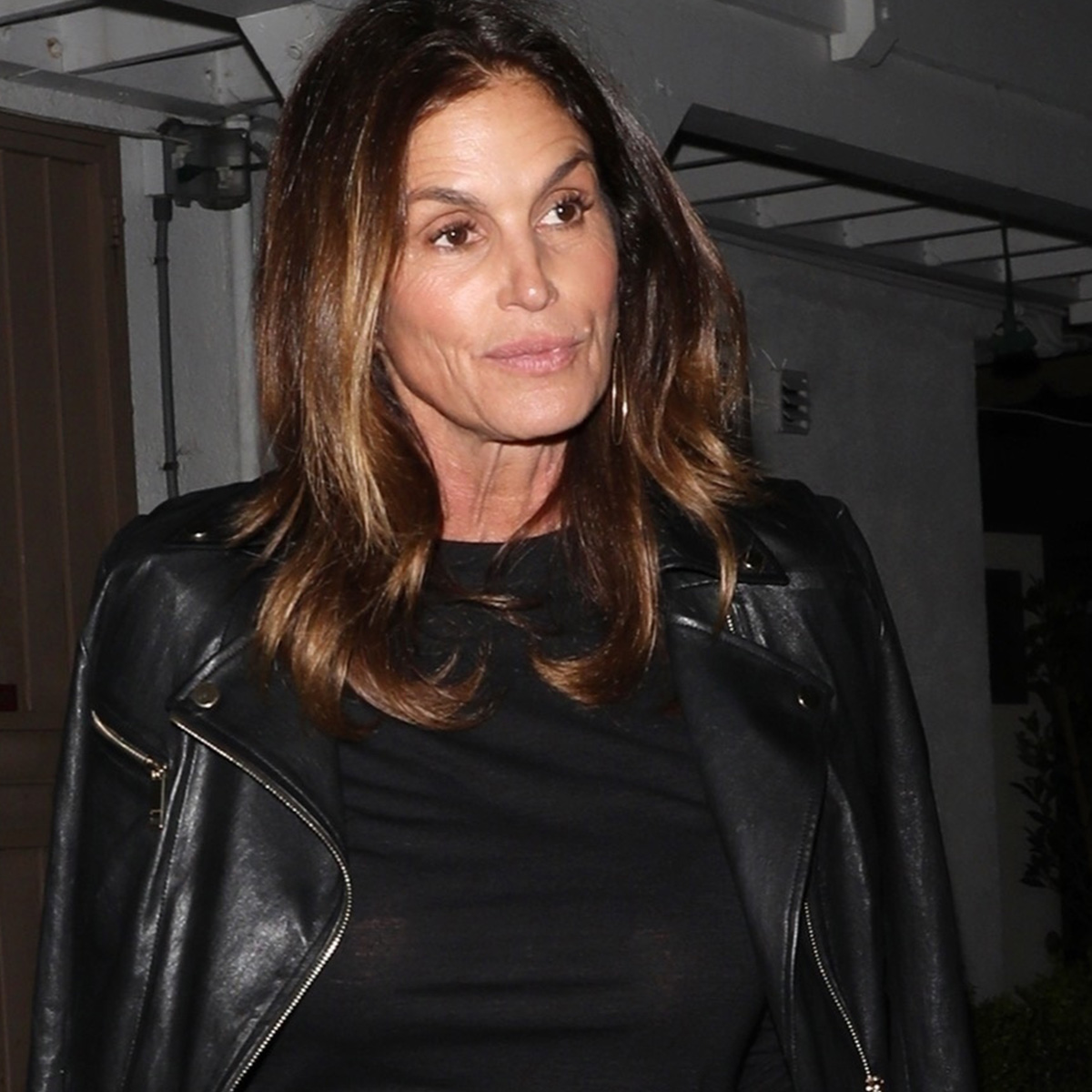The Queen of Microfeathering Transformed My Sparse Brows—See the Before & After
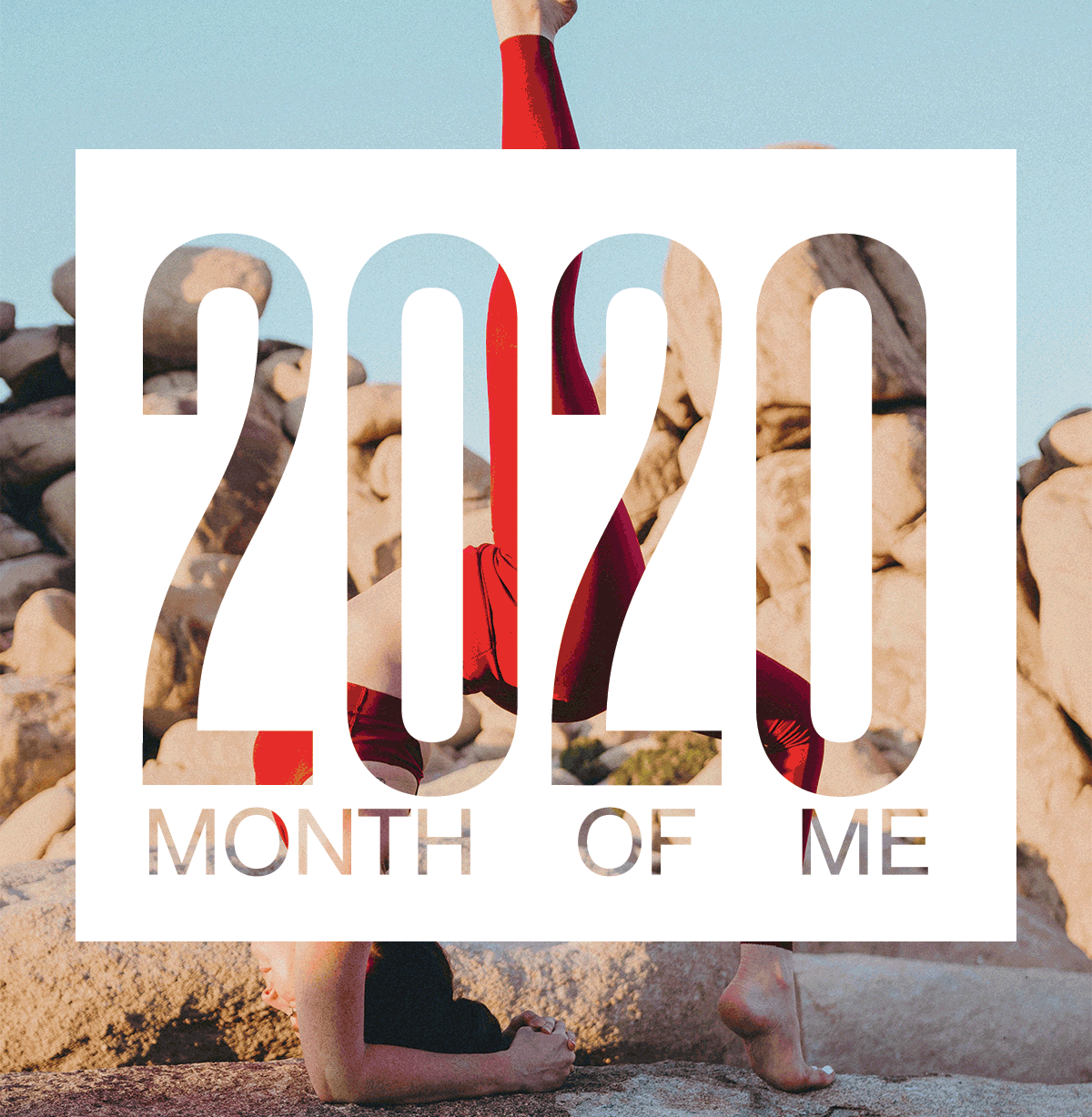
Welcome to the Month of Me, where every day in January we’ll be publishing a new fashion, beauty, or wellness article featuring a first-person account of shaking up an old habit, pushing beyond a comfort zone, or simply trying something new. Follow along for 31 days of storytelling, including what it’s like to quit alcohol for 80 days, try Beyoncé's very strict diet, or completely overhaul your closet.
My eyebrows will never be the same. I have been touched by a brow angel, and her name is Kristie Streicher. Even if you’re not familiar with Hollywood’s go-to eyebrow master, you’ve likely seen her work, as she has done the arches of Gwyneth Paltrow, Adele, Emily Blunt, Mandy Moore, and the list goes on. I remember when her name first started circulating the Who What Wear offices a few years ago—sneaking away for a coveted appointment was grounds for bragging rights. I was straight-up fascinated by the way she was at the center of the growing full-brow zeitgeist.
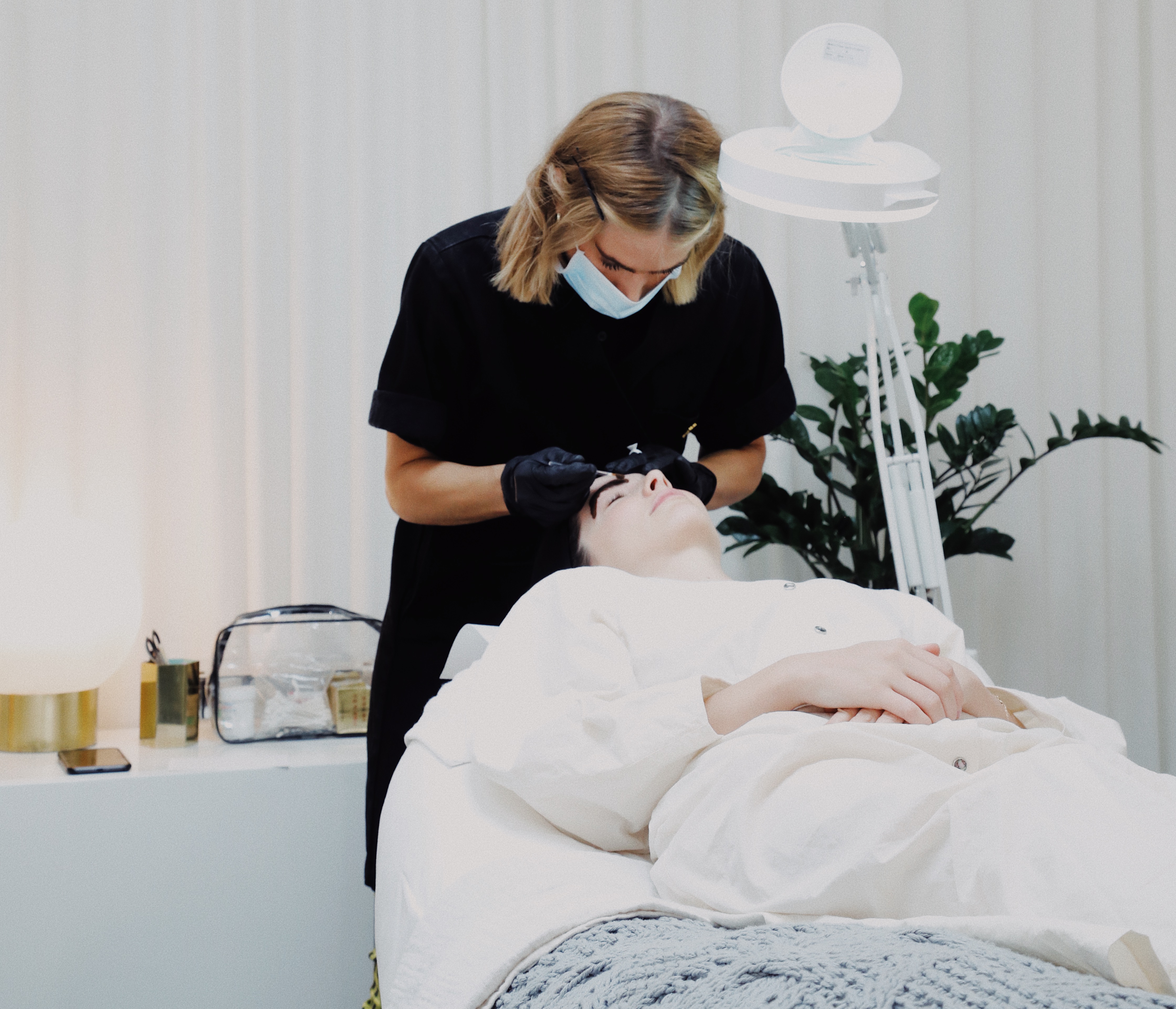
Fast-forward to last January, and after seeing countless pictures of Streicher’s work on her Instagram, my bushy-brow ambitions and I hatched a plan. I emailed Streicher’s PR with a pitch for me to try her trademarked Microfeathering technique, Streicher’s microblading concept in which small incisions (or strokes) are made in the epidermis with a custom pigment to mimic the appearance of additional brow hairs. This email was a long shot for a few reasons. First, never before has Streicher allowed a media outlet to document her signature process in detail. Second, I have a friend who has been on a waiting list for the procedure for over a year, and according to a recent Los Angeles Times article, Streicher has stopped taking on new clients entirely. Third, the procedure costs a substantial $2500 and takes two or more appointments (I saw Kristie a total of four times) and several months to arrive at the final result. Despite all this, the brow gods must have been in my favor that day because they agreed to set up a consultation for me with Streicher.
THE CONSULTATION
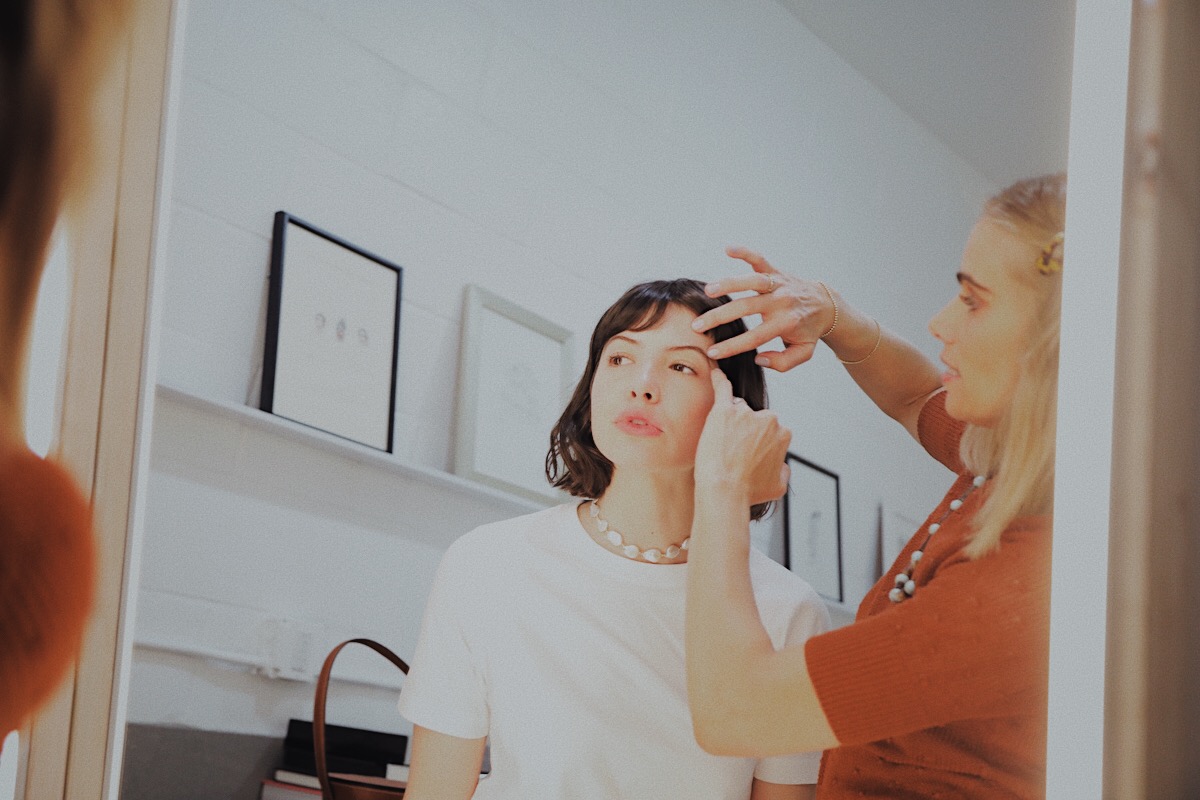
I arrived for my consultation at Striiike, the airy, Pinterest-pretty Beverly Hills beauty studio Streicher shares with her sisters, who specialize in hair and makeup. Streicher sits me down in a beauty chair and says, "Your brows should never walk in the door before you do.” I immediately felt at ease knowing she shared a love for bold brows but not too bold. Streicher fluffed and inspected my brows and skin while I held my breath to see if I passed muster.
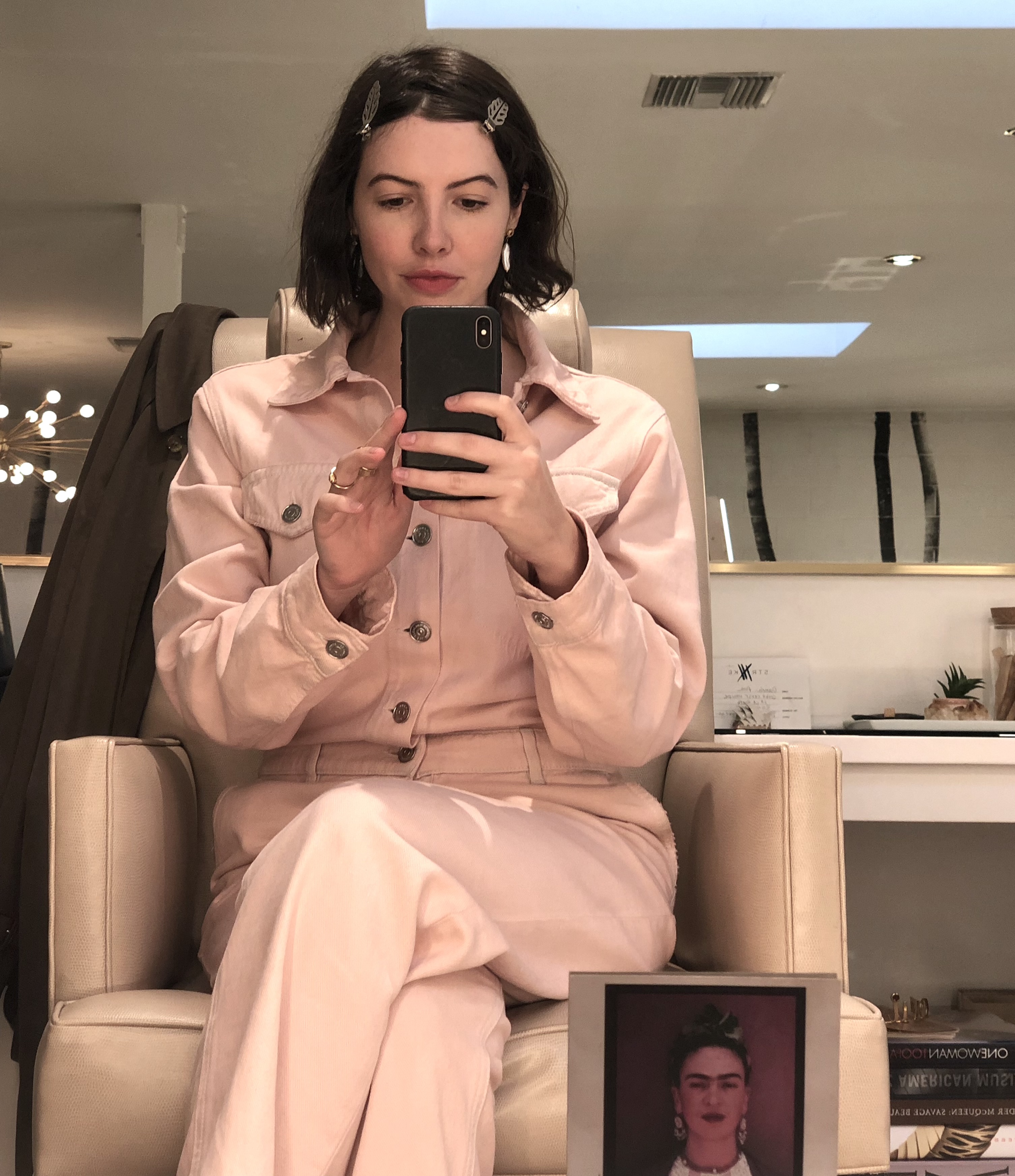
Some selfie action at the Striiike studio.
How to tell if you are a Microfeathering candidate:
Even if you can finagle an appointment, not everyone has the type of brows or skin that is conducive to Streicher’s Microfeathering technique. Since her approach is more about enhancing what you have, rather than creating a brow out of scratch, if you don’t have enough hair to work with, you may not be a candidate. Streicher told me, "When I first learned about the microblading technique, I was actually quite turned off by how unnatural it looked. I thought it looked much too overfilled and resembled a tattoo.” If you do a simple Google search for microblading, you’ll see plenty of examples of this kind of solid, Sharpie-like brow, which is exactly what Kristie does not do. "I soon realized it was more the way it was being taught. It wasn’t until I started developing my own technique that I recognized the many variables that can affect the end result.” Another of those variables is your skin type. Let's get into the details:
Microfeathering works best on these skin types:
Dry skin type with small pores: This skin type is thin but not overly thin or crepey; skin is usually not very sensitive and doesn’t bleed easily.
Normal to combination skin type with small pores: This type of skin is usually non-translucent (ranges from light to dark skin tones), young or mature, and doesn’t bleed easily.
Normal to oily skin with medium pores: Skin is usually thicker and oilier; usually non-translucent (range from light to dark skin tones), young or mature, and doesn’t bleed easily.
Microfeathering does not work well on these skin types:
Thick, oily skin with large pores: The constant production of oil will cause the hair strokes to heal with a thicker, diffused look. Overall, the pigment may get rejected or the end result will appear fuzzy or powdered.
Thin, delicate, hypersensitive skin: This skin type is usually translucent with nearly invisible pores; it is often very sensitive (rosacea or dermatitis). Generally, this skin type bleeds very easily and has a harder time healing, which causes the pigment to appear more ashy, blurred, and patchy.

Streicher tweezing my brows.
Beyond checking the skin and eyebrow hair boxes, your brows have to be in their fullest natural state before you have your first appointment. If you’ve had tweezing or hair removal in the past several months, do not pass go! Do not move on to the prized first appointment! Instead, you basically have to grow out your brows for the next six to 12 months. As I now (annoyingly?) say, the road to brow glory is paved with patience. Streicher insists on working with one's natural brow shape and not a previously shaped brow so that she can see exactly what she is working with: "My greatest fear is to overdo any technique and take away the very thing that gives us a beautiful, natural brow with its individual character.” Lucky for me, Streicher’s let-’em-grow approach to eyebrows had infiltrated my beauty routine years ago, so I hadn’t tweezed in a very long time when I first came to her.
If all this sounds like a lot of hoops to jump through, it is. Though, from my point of view, these specifications just highlight Streicher’s unusually high standards to get best-in-class results. Do I want the person who is doing semi-permanent makeup on my face to take all the precautions so she can to do her best work? You betcha.
THE FIRST APPOINTMENT
Congrats! You made it to first appointment with me. If you’ve read this far, I commend your commitment to this article and knowing about the life-changing joy of Microfeathering. Let’s get to it.

Streicher mixing my custom pigment.
What is actually being done?
After assessing your unique hair growth patterns, Streicher mixes a custom pigment to match your exact eyebrow hair shade. Streicher uses iron oxide pigments, as they are considered the safest semi-permanent pigments to use on skin. After numbing the area, small incisions are created using a fine and very precise blade.
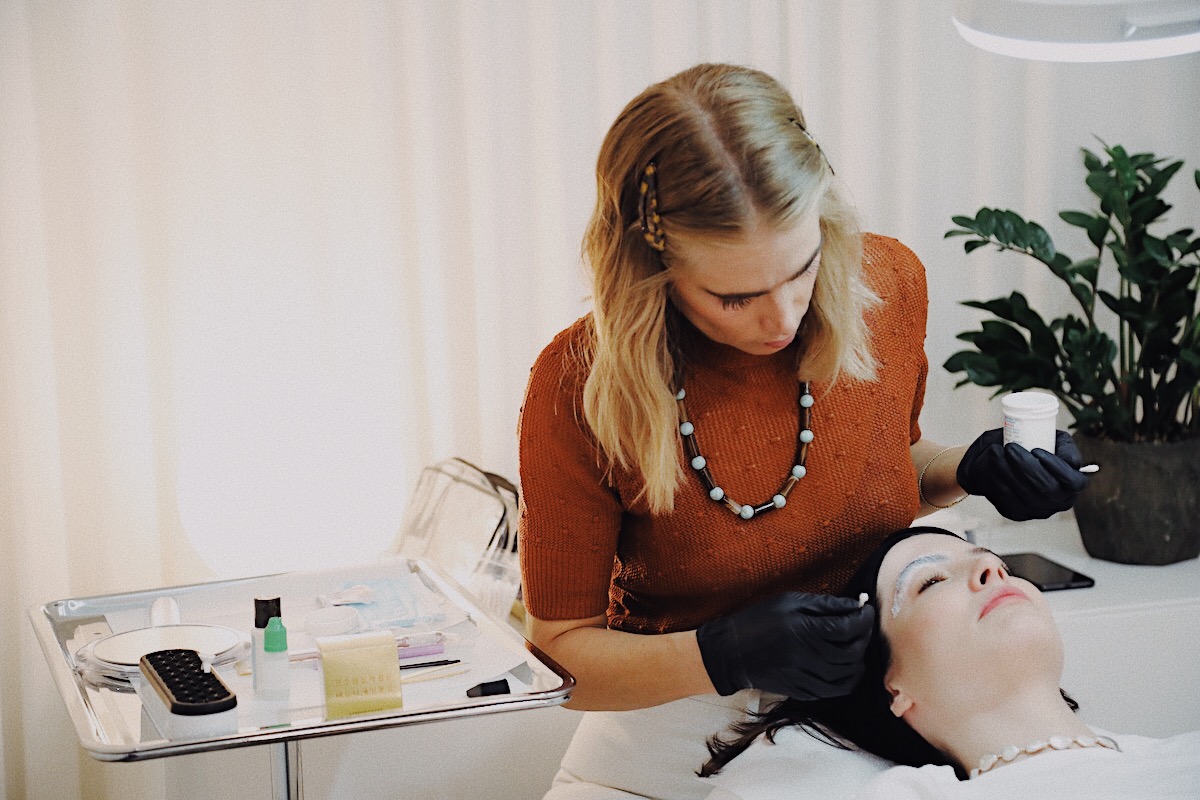
Streicher applying numbing cream.
Pigment is deposited in the incisions with the ultimate goal of creating hairlike strokes that resemble and mimic natural hair. "I use a simple baby-step approach by first testing the skin during the first appointment. Microfeathered strokes are created in some of the more dense areas of the brow as a way to test pigment, structure, and design of the hair strokes,” says Streicher.
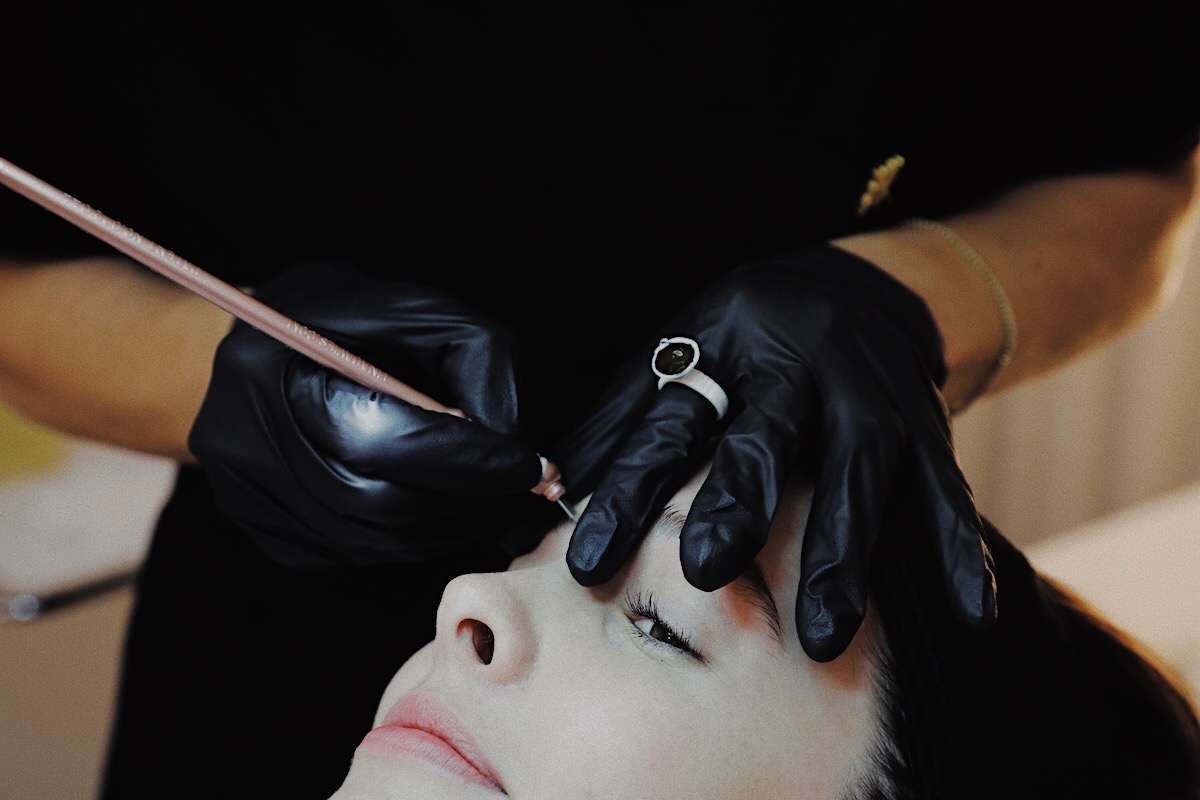
The first cut. I only look a little uncomfortable, right?
Does it hurt?
I would say it’s two out of 10 in terms of pain, with 10 being unbearable pain. Streicher uses a very effective and fast-acting proprietary topical anesthetic cream called lidocaine to numb the area in advance and uses a timer to ensure she gives the area plenty of time to get completely numb. No shortcuts ever is Streicher’s mantra, I swear. In some areas where the lidocaine worked particularly well, I honestly couldn’t feel anything at all. Other parts were a bit more sensitive, but it wasn’t bad enough pain that you instinctually jerk away. I was glad when it was over but didn’t dread the second appointment at all knowing that it wasn’t very painful.

Streicher making incisions and dipping her blade in the ink pot on her finger.
What to expect:
All in all, you’re at the studio for about an hour and a half, but incisions are being made for only about 30 minutes or so. The sound of the blade at work is actually a bit more cringey than the pain itself. It sounds a bit like scratching sandpaper, and Streicher has headphones to wear if you find it unnerving. I just tried not to focus on it myself or connect that sound to my eyebrows being sliced (sorry).
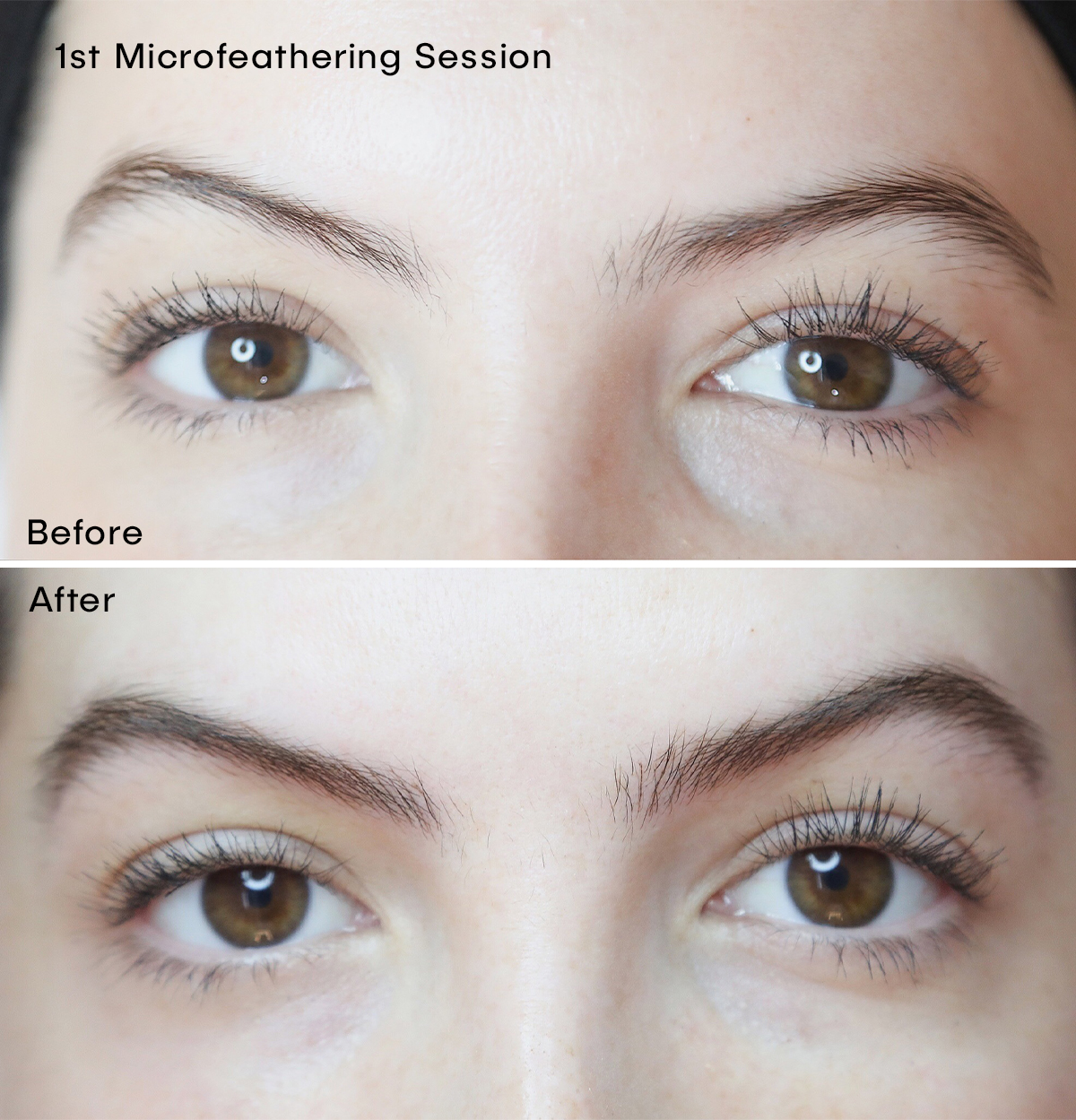
As you can see from the first before and after, my brows look noticeably thicker, though the enhancement is relatively subtle. This is because Streicher uses the first appointment to test, mostly in the areas of your brow that already have hair.
THE HEALING PROCESS
Basically, your new brows are high-maintenance as hell. But taking pains to do the proper aftercare in that critical first week is so worth making sure your brows live up to their full potential.
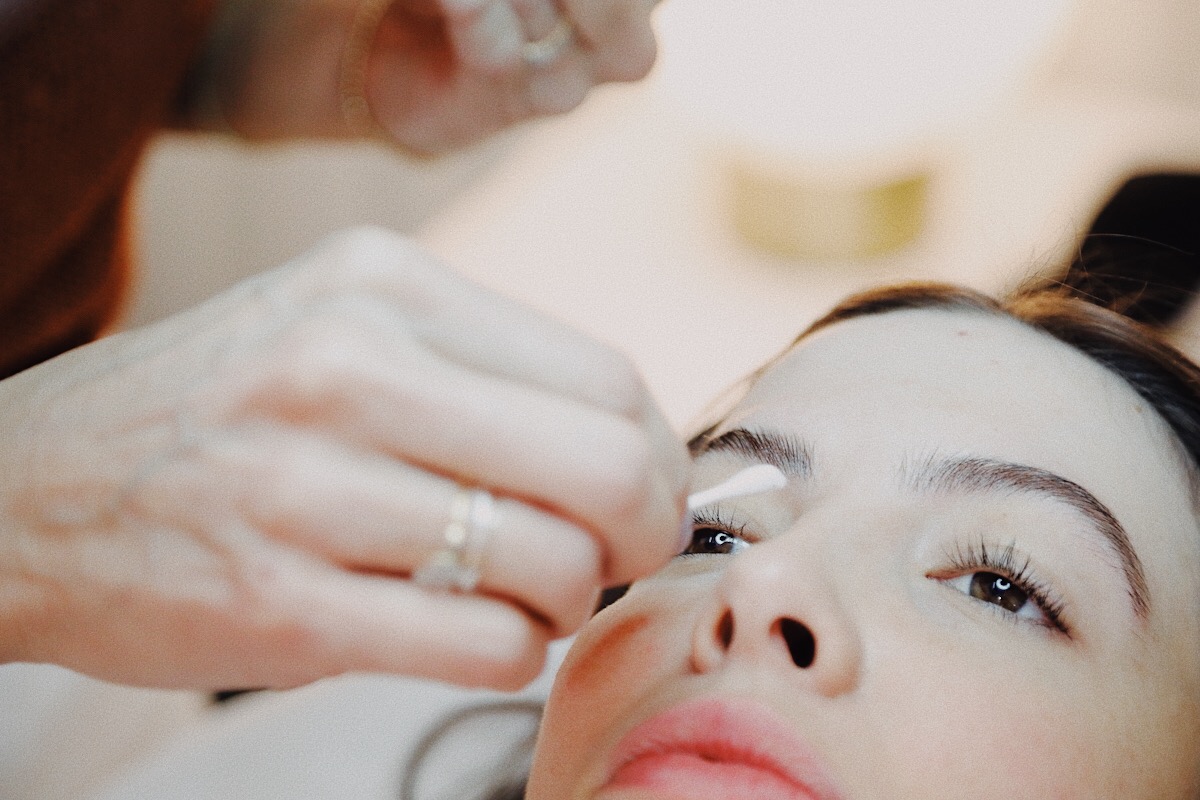
Streicher applying Aquaphor to my brows.
First 24 hours:
Streicher sends you and your newly bladed brows home with a handy kit of instructions, cleanser, and Aquaphor to slather on every two hours, which helps create a moisturizing protective barrier. Since aftercare in the first 24 hours is more intensive, I would plan your blading appointments around a low-key day or two. I remember my eyebrows feeling a bit sore but nothing truly uncomfortable. Redness was also minimal for me.
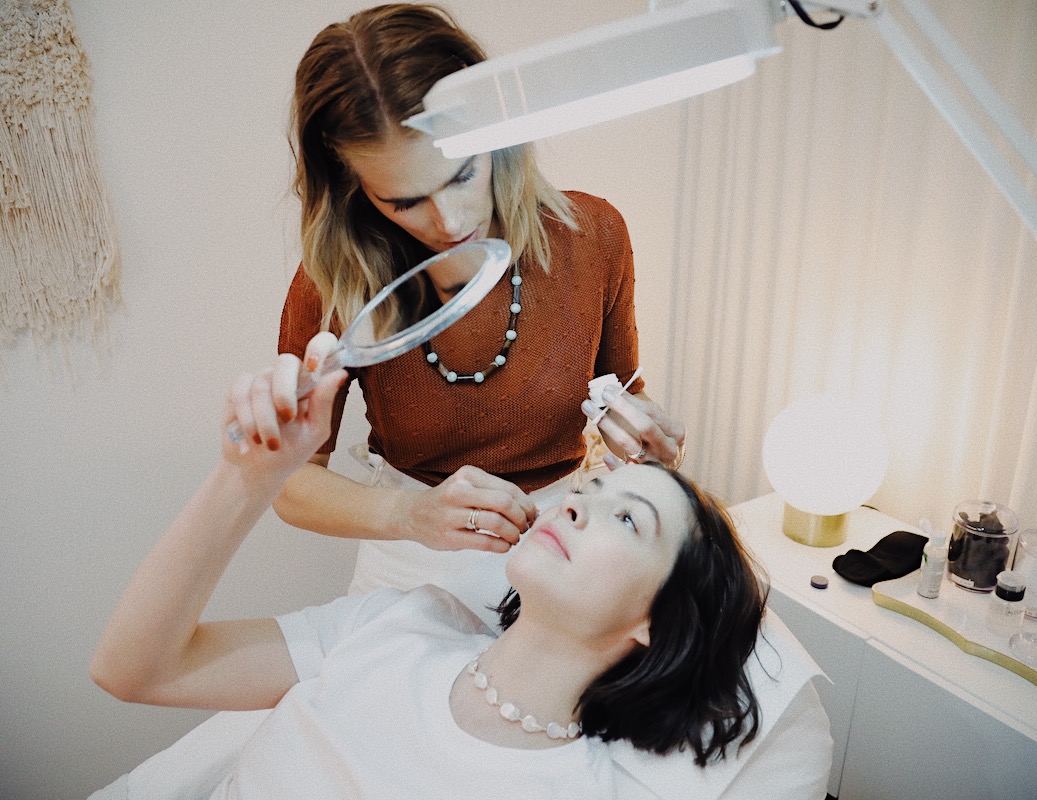
Days 2 to 7:
For the rest of the first week, you have to apply Aquaphor three times a day. I also avoided spraying water directly on my eyebrows by using micellar water and cotton balls to "wash” my face and by using a removable showerhead and tipping my head back to wash my hair. Before showering, I also made sure to put a fresh coat of Aquaphor on to protect against any errant drops.
For the first three days, your eyebrows will grow significantly darker from how they looked when you left the studio. I’m talking Groucho Marx status, so I’d plan around any photo shoots or big meetings. From day four on, they begin to look more normal as they gradually lighten. As the brows heal, they also begin to itch, and despite all instincts, you can’t scratch them! You also have to be very careful with getting any sun exposure on your brows, so Streicher recommends wearing sunscreen on your brows to prevent fading. At first, I made the rookie mistake of trying to use mineral-based sunscreen. My eyebrows were already slick and shiny from the Aquaphor, and with a super-chalky white layer of sunscreen on top, it was quite the look. I'd sidestep my SPF mistake with Streicher's recommendation: Supergoop!’s Unseen Sunscreen ($32), which is clear and gel-based. Lastly, you should keep exercising and excessive sweating to a minimum for the first week to preserve the color, which I had no problem abiding by!
Your brows will take six to eight weeks to fully heal and for the final color to set in, and then it’s time for the second round of Microfeathering.
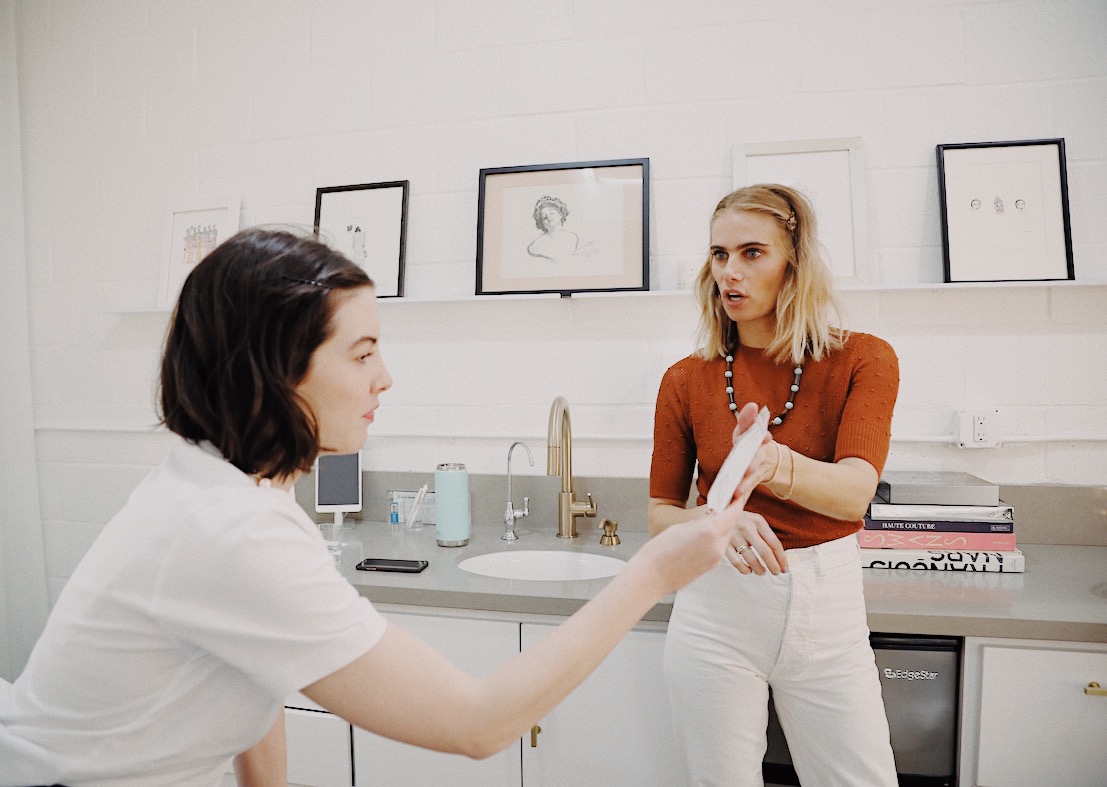
Some additional aftercare rules from Streicher:
(I warned you there were a lot of guidelines!)
"Clients will need to avoid tanning, swimming (pools, oceans, etc.), steam rooms, saunas, hot tubs, hot yoga, and contact with animals for two weeks after in order to protect the procedure area. Do not use products that contain alpha-hydroxy acids (AHAs) or chemical peels, as these acids will fade the pigment color. If the client is on Retin-A or retinol, they must discontinue use of these products for seven days prior to their Microfeathering appointment and avoid for 30 days following the procedure."
THE SECOND APPOINTMENT

Streicher showing me the progress from round one.
By the time my second appointment came around, I was more than ready to add more strokes to my brows. Streicher is more conservative on the first round, and "the second appointment occurs six to eight weeks later (depending on how the client’s skin heals/responds) when additional strokes are then added as needed. This ensures the best and most natural result possible, as every brow heals differently,” she explains.
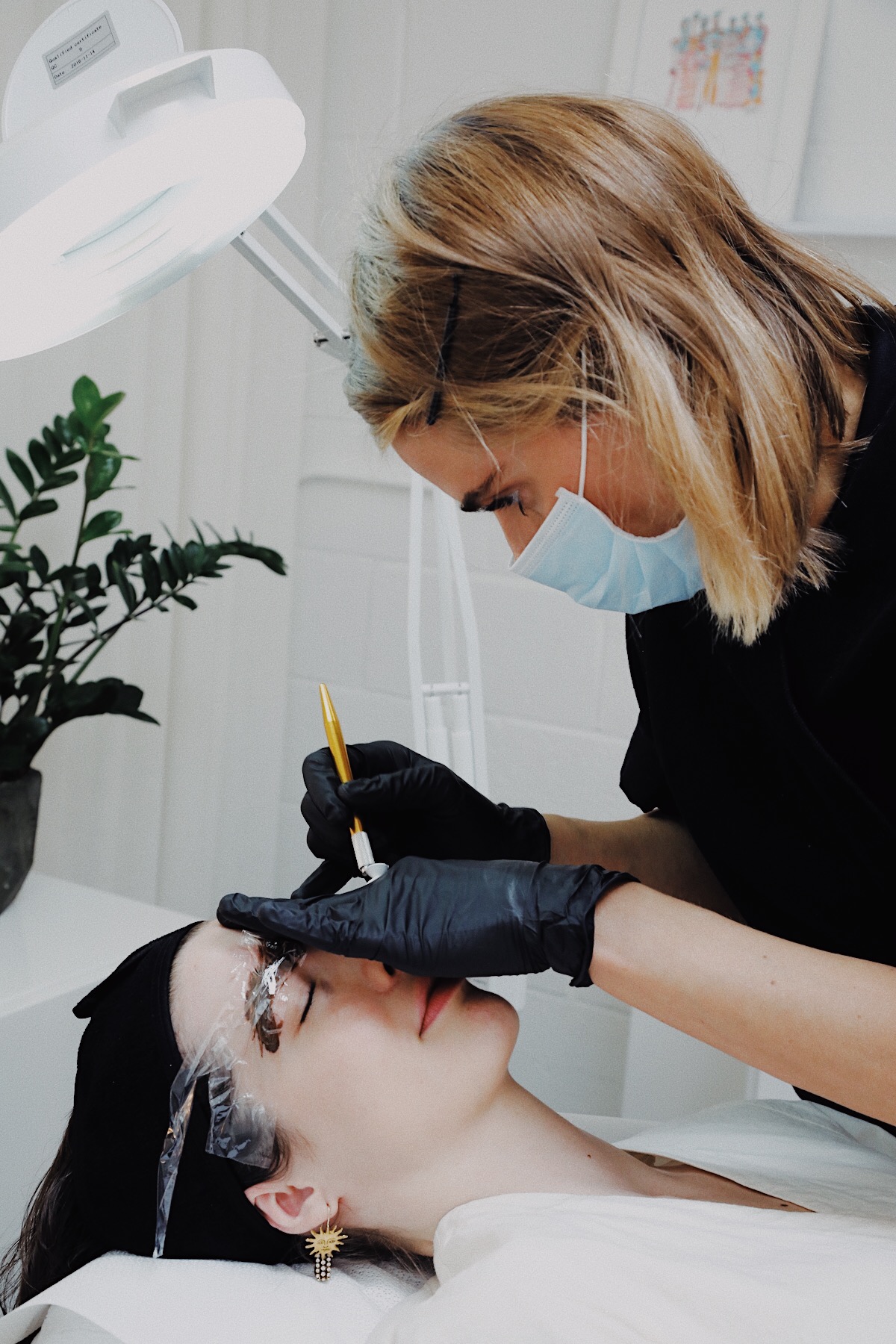
Streicher applying a pigment mask.
The second appointment was pretty similar to the first, but this time my pain was more of a three out of 10. Streicher said there are variables like your menstrual cycle that can affect pain levels. That said, it still was completely manageable. After the second appointment, you repeat the aftercare. I personally was glad I only needed two sessions, as the aftercare is a bit of a process, though Streicher says, "some clients may even require a third session to achieve a fuller look, especially if they have scar tissue or an oilier skin type.”

The big reveal after finishing round two. Can you tell I'm mesmerized by my brows?

The bushy eyebrows of my dreams, at last! You can tell Streicher took the brow shaping to the next level in the second session, adding strokes outside my natural eyebrow hairs. In the after photo, you can see especially at the top of the brows how the strokes are quite defined. They don't stay quite like this though. As the eyebrows heal, the pigment sinks into the skin for an effect that's slightly more natural than what is pictured here.
THE FINAL RESULT & LIFE POST-BROWS
After another six to eight weeks after my second appointment, I came into the studio to capture the final before-and-after.
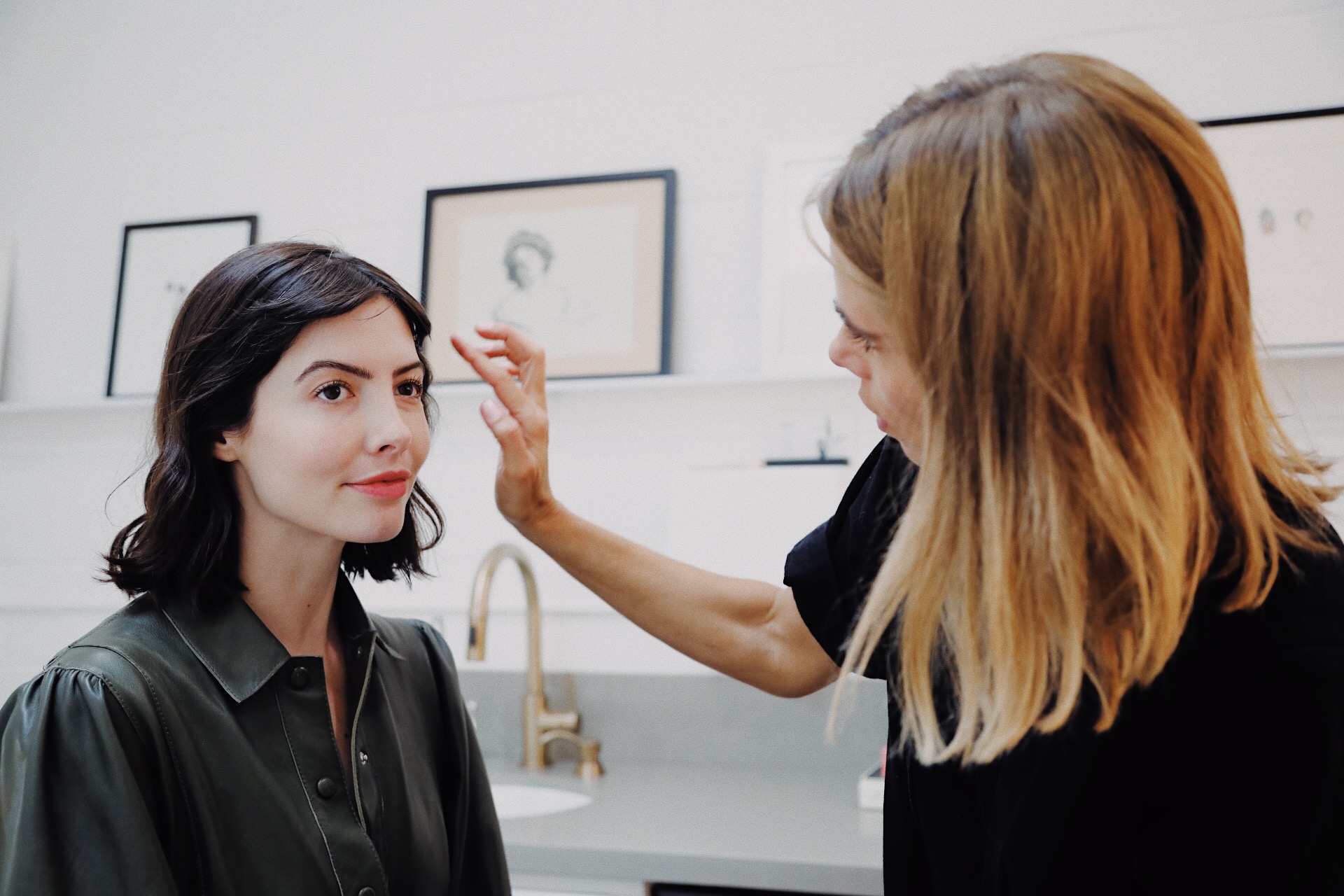
How I feel about my final brows:
In a word, I am obsessed. I never want to go back to my pedestrian un-Microfeathered brows—the horror! I am not ashamed to say I feel significantly prettier getting out of the shower and going no-makeup, which I think affects my confidence. Good hair is transformative, and I think that extends from the hair on your head to your lashes and brows too. My first appointment was in March, and I went in for my final pictures in June; that makes this the longest lead story I have ever worked on. As you can tell, it’s quite a process, but one I am so thankful to have had the opportunity to do.
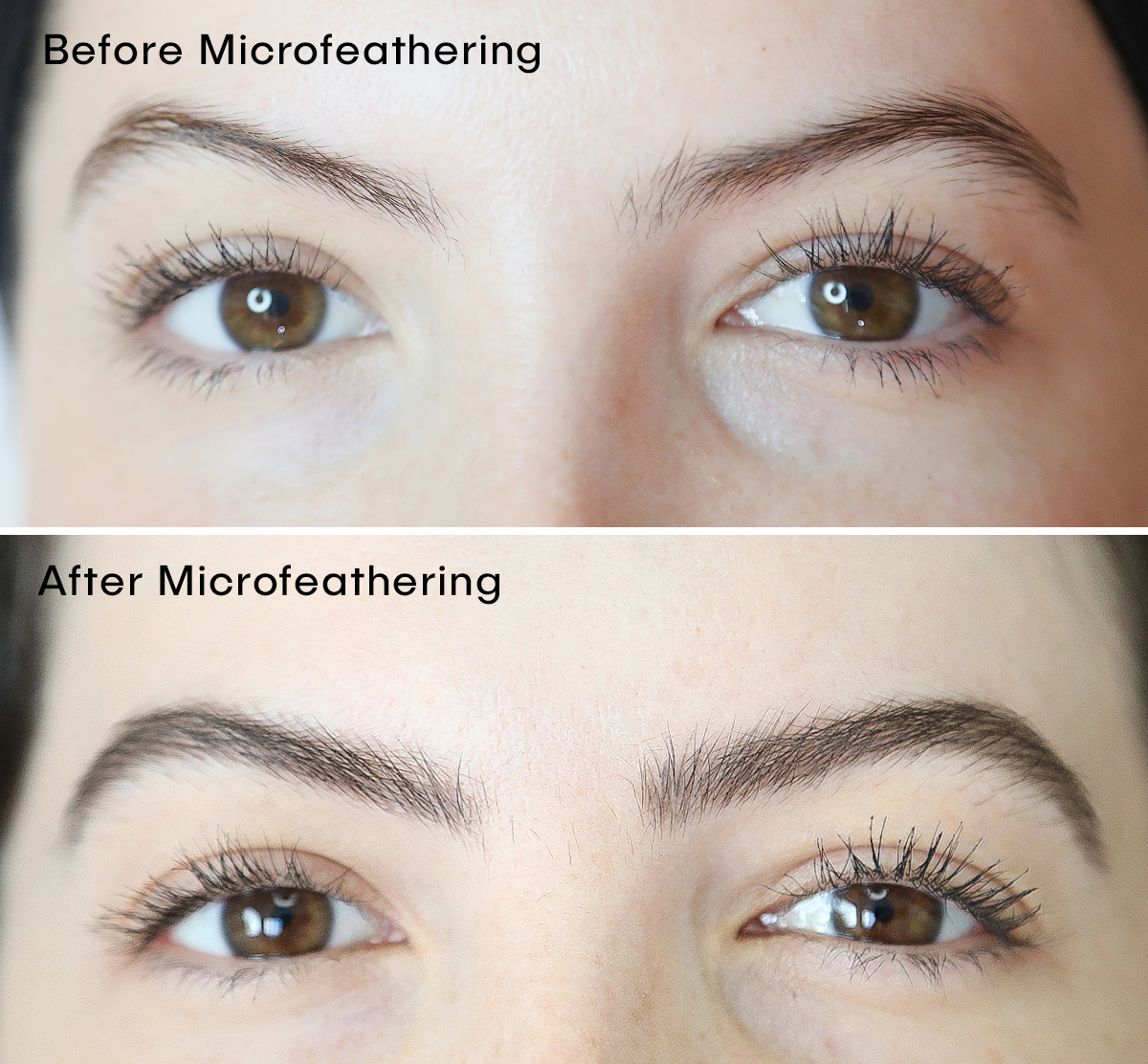
They are also especially natural-looking. I encourage people (sometimes even strangers) to get an inch from my face to examine the results, and most can’t even tell what is Microfeathered "hair” versus real hair. They are the exact level of bold I would have chosen, filled in and full, without looking too strong if I’m not wearing any makeup. Plus Streicher’s signature work is exactly the style of brows that I wanted, not as if they fit in a stencil, but feathery, including the coveted sprout-like strokes at the beginning of your brows.

Does Microfeathering replace brow makeup?
My plain brows now look way better than they did when I used to use brow gel and pencils. I go most days without doing a damn thing to them, but if I want something a little more, I’ll brush on Ilia’s Essential Brow Gel ($26). Streicher says, "I believe that the face should look balanced and framed with beautiful brows without any makeup. However, there are certain occasions where intensifying your brows is appropriate. Using makeup to make them bolder is now just a quick fill-in with the product of your choice. I like using a powdery, soft, low-wax pencil and a tinted brow gel.”

An unexpected benefit:
I thought Microfeathering would just make my brows look better, which it did, but it also weirdly made my face look more symmetrical and rested overall. Streicher explains, "Even after 20 years, I am still amazed by the subtleties of brow shape, and they can really lift and open up the face and eyes. Lifting the under portion of the front/beginning portion of the brow as well as lifting the ends or tails by adding a row of hair to the top portion of the brow can make a huge difference.” I know they say eyebrows are supposed to be sisters, not twins, but mine weren’t even related before. I used to have one noticeably "better” eyebrow (in the close-up before photo above, you can see my right eyebrow looks thinner than my left), and Streicher evened them out perfectly. I’d also like to add that she did all this work without really any direction from me. I didn’t tell her about fixing my sparser eyebrow, how full I wanted them to be, or how I wanted little sprouts. She just knew.
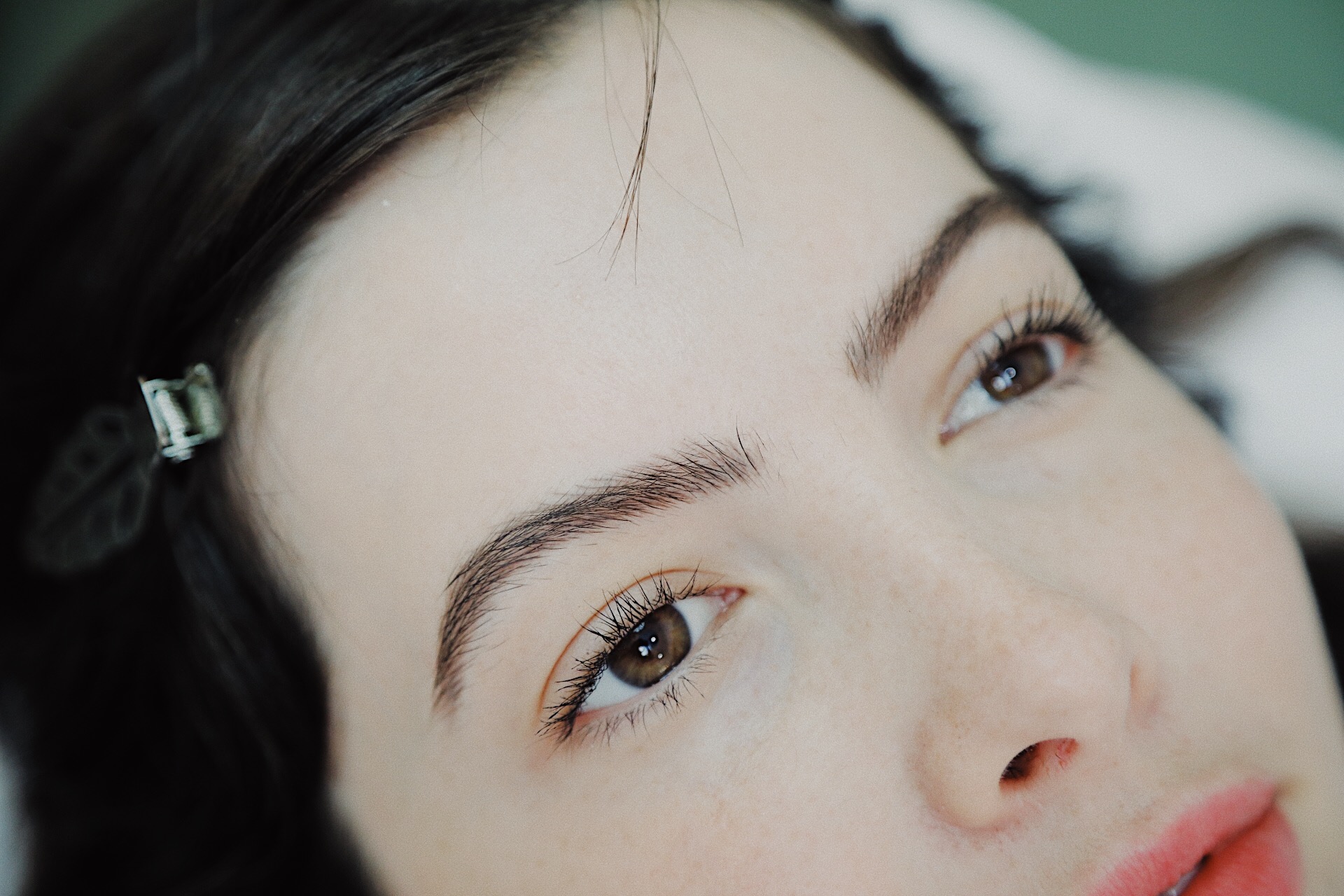
I guess I shouldn’t be surprised at the level of artistry I received in Streicher’s hands. Her after photos, such as the one above, speak for themselves. Plus, she has been doing brows for over 20 years and practicing Microfeathering specifically for four years. When I asked how she started, she shared: "I spent a year developing my technique on over 300 test models, using it more conservatively as a fill-in technique rather than re-creating an entire brow. At that point, I thought, I may have something here!” Spoiler: She was right.

A recap of the process from start to finish.
THE "I KNOW YOU'VE GOT MORE Q'S FOR KRISTIE" SECTION
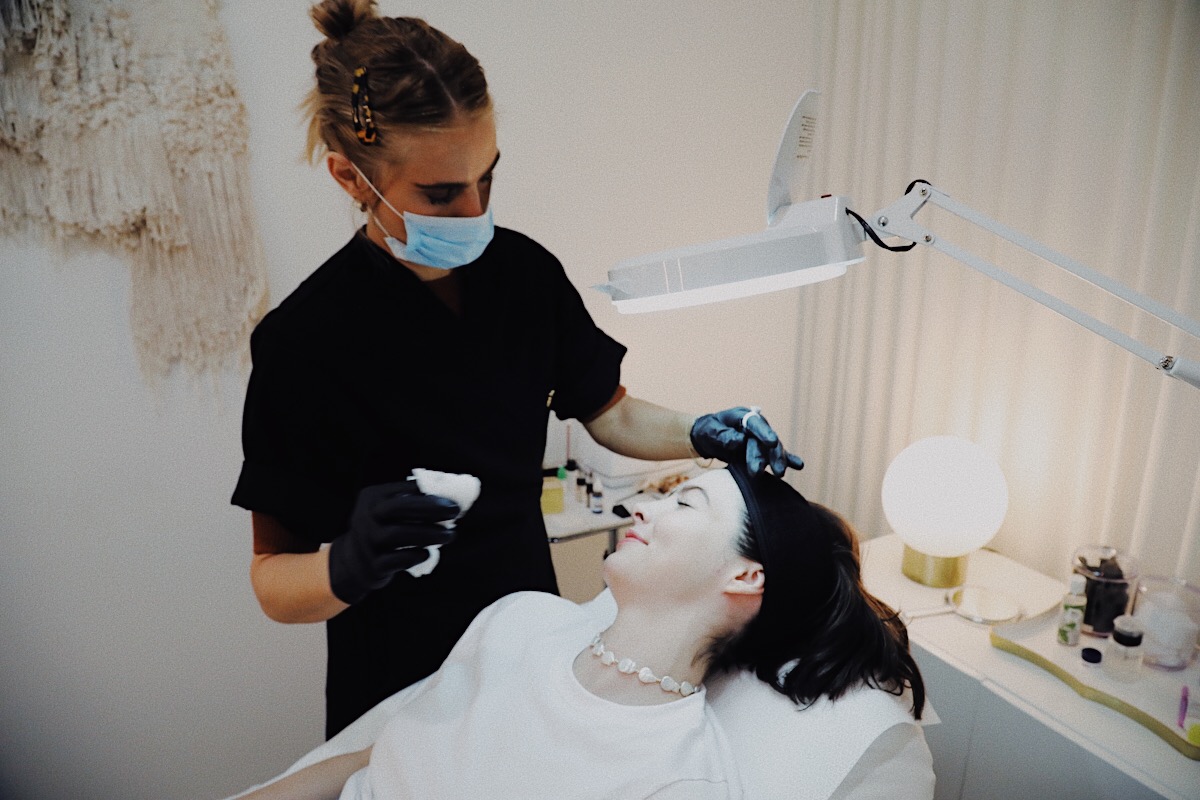
How long does it last? When do you touch up?
"Microfeathering lasts up to 12 months, depending on skin type. I recommend clients book a touch-up seven to nine months later. Those using rapid cell-turnover products such as retinoids will see the pigment fade sooner and may need a follow-up sooner than seven months. The Microfeathering process is two appointments, which includes the initial session and a touch-up six to eight weeks later. My cost for those two appointments is currently $2500. Any touch-up thereafter (typically seven to nine months later, as mentioned above) are $1200 each."
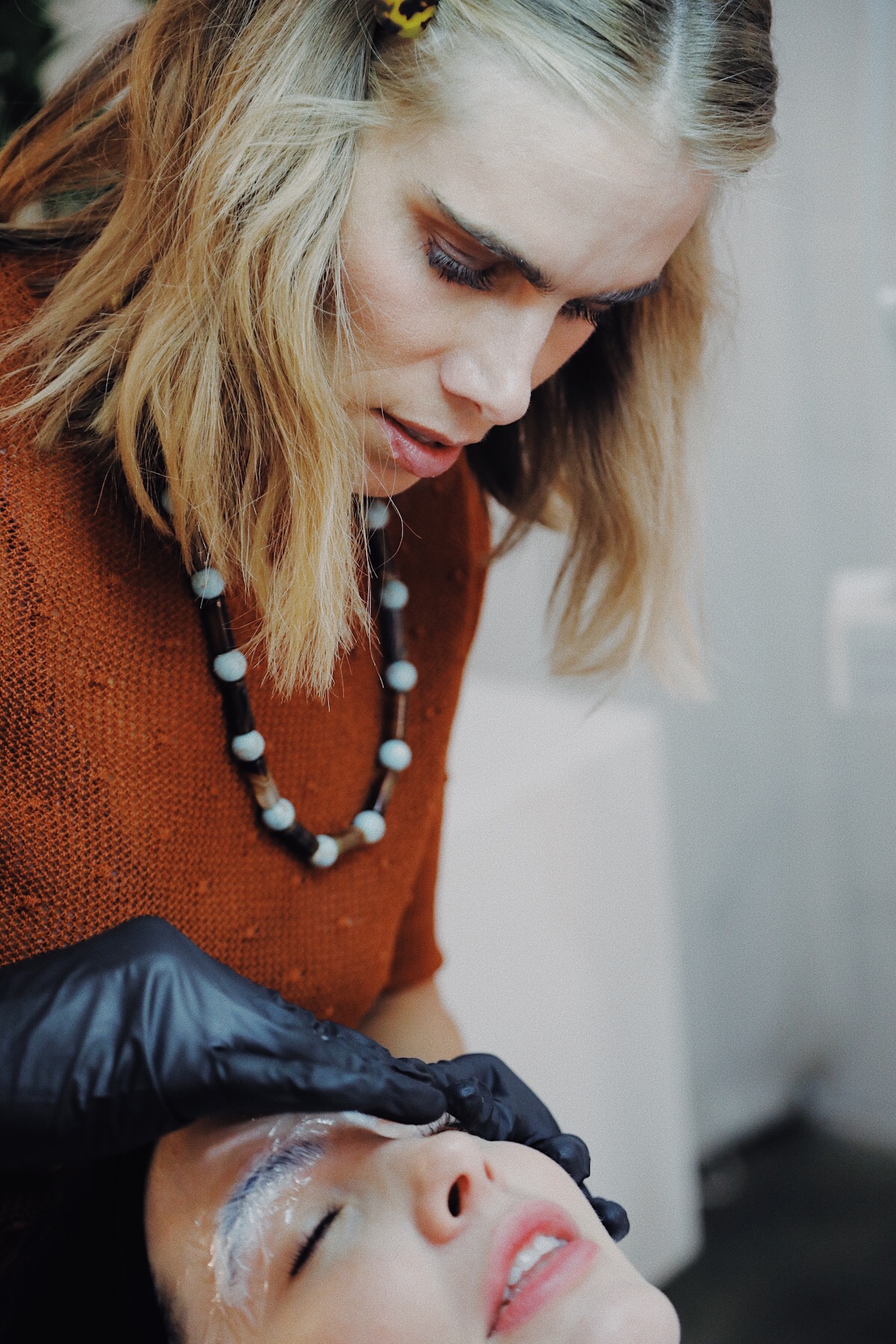
Can you go back to regular brows if you want, or once you start Microfeathering, can you not stop?
"The strokes of pigments will eventually fade and cycle out of the skin over the course of an eight-to-12-month period. (We recommend that clients consider a touch-up appointment at this point.) However, this does not mean that the Microfeathering treatment will completely disappear. Depending on the client’s skin and health, the pigment may leave a soft haze of residual pigment behind. It is recommended to have the treatment touched up before two years and no sooner than four months."

Can you still shape your brows afterward—wax, pluck, thread?
"While brows are healing, I do not recommend any brow shaping for typically six to eight weeks post-treatment. Once brows are fully healed, I endorse only tweezing on the six-to-eight-week cycle."

Any tips for finding someone who will do high-quality microblading?
"Experience and aesthetic are key for finding a specialist that follows your aesthetic, and ask to see photos of their work. Another tip to finding someone who does good work is if you see someone with beautiful brows, ask who does them."

What are you favorite makeup products for filling in brows?
"Troy Surratt Expressioniste Pencil: This pencil is great because it has the ease of a pencil with the soft, natural look of a powder, and it's REFILLABLE! The precise tip is great for filling in sparse areas but also offering definition and real hairlike strokes to the brow. Directions: Lightly shade skin under the hair using short, feathery strokes. Use it gently going against the hair growth direction to get underneath the hair. Then blend out with the brush side of the pencil under the cap.”
"Hourglass Arch Brow Pencil: This pencil is great because the color is on point and it has the ease of a pencil with the soft, natural look of a powder. The tri-angled tip and powdery formula are great for filling in sparse areas, adding fullness and definition to the brow.”
"Hourglass Arch Brow Volumizing Gel: I LOVE THESE! Use it gently brushing backward against the hair growth direction. This picks up the hairs and wraps the fibers around the follicles fluffing them up! Adds instant volume! This can be the quickest fix in creating a fuller brow. Think of this as mascara for the brows. When you add volume and richness to the lighter hair/fuzz that grows around and between the thicker brow hairs, it creates the illusion of a fuller, more natural brow."
"Mary Kay Clear Gel: Clear, strong-hold gel. Using small, upward brush strokes, brush all hairs up and out."

What do you think is the future of microblading and eyebrow care?
"My hope is that all of these semi-permanent and permanent techniques are relatively new within the last eight to 10 years. I think they will continue to evolve into more natural-looking and longer-lasting brow treatments, giving those with very little to no hair a chance to have natural-looking, fuller brows."
Great brows for all? As a newly minted, bladed-brow evangelist, that's a future I'm excited to see.
Kat Collings has over 15 years of experience in the editorial fashion space, largely in digital publishing. She currently leads the vision for editorial content at WhoWhatWear.com as the site's editor in chief, having risen through the editorial ranks after joining the company in 2012. Collings is a Digiday Future Leader Awards nominee, was named Buzzfeed's best fashion Instagram accounts of the year, and is a member of the CFDA Awards Fashion Guild. Prior to Who What Wear, Collings worked on styling projects for brands such as Vogue, Teen Vogue, Lucky, and Oliver Peoples. She graduated from UCLA with a BA in communications and calls Los Angeles home.
-
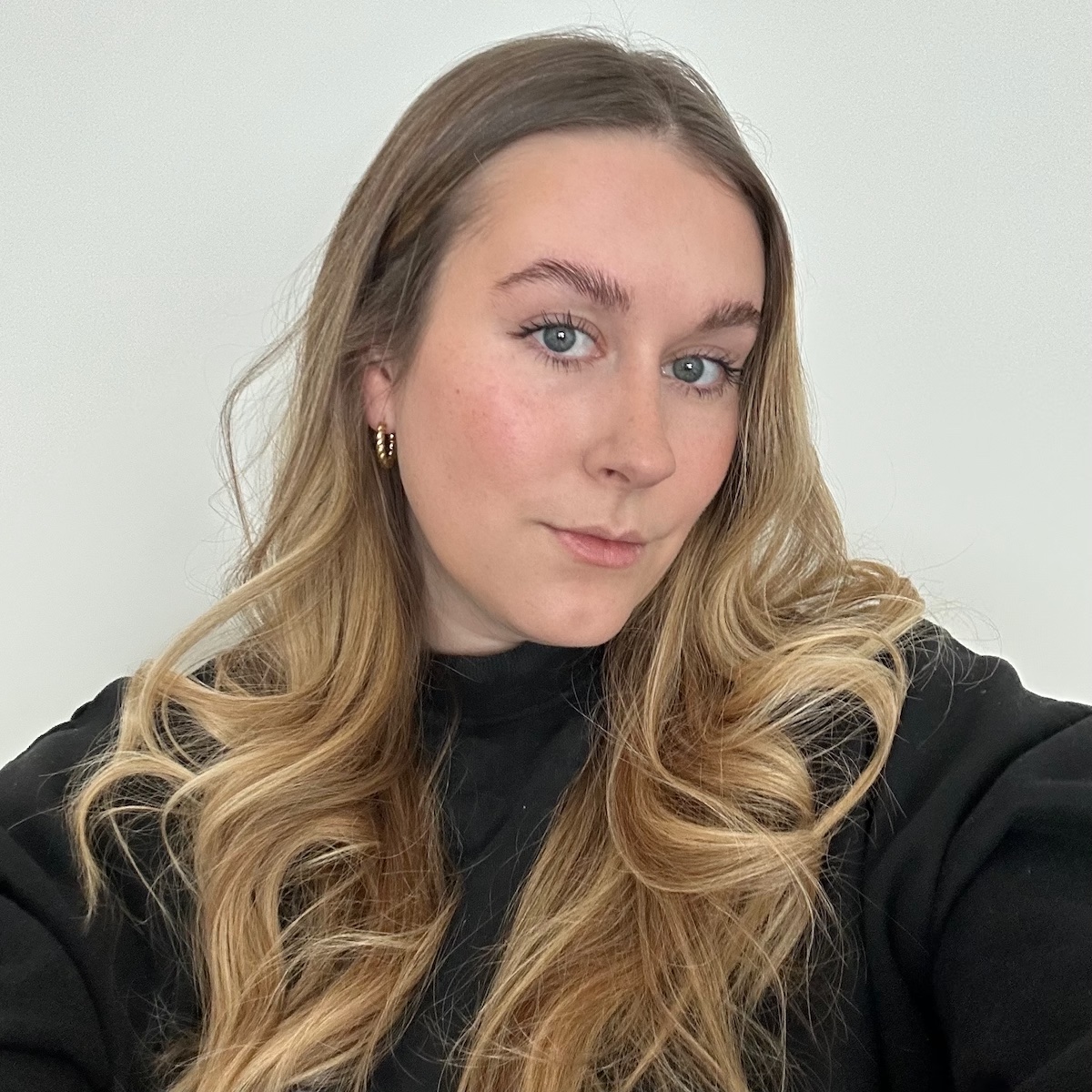 Full Brow Lamination Is Out, But "Baby Brow" Lamination Is In—Here's the 411
Full Brow Lamination Is Out, But "Baby Brow" Lamination Is In—Here's the 411I'm officially a fan.
-
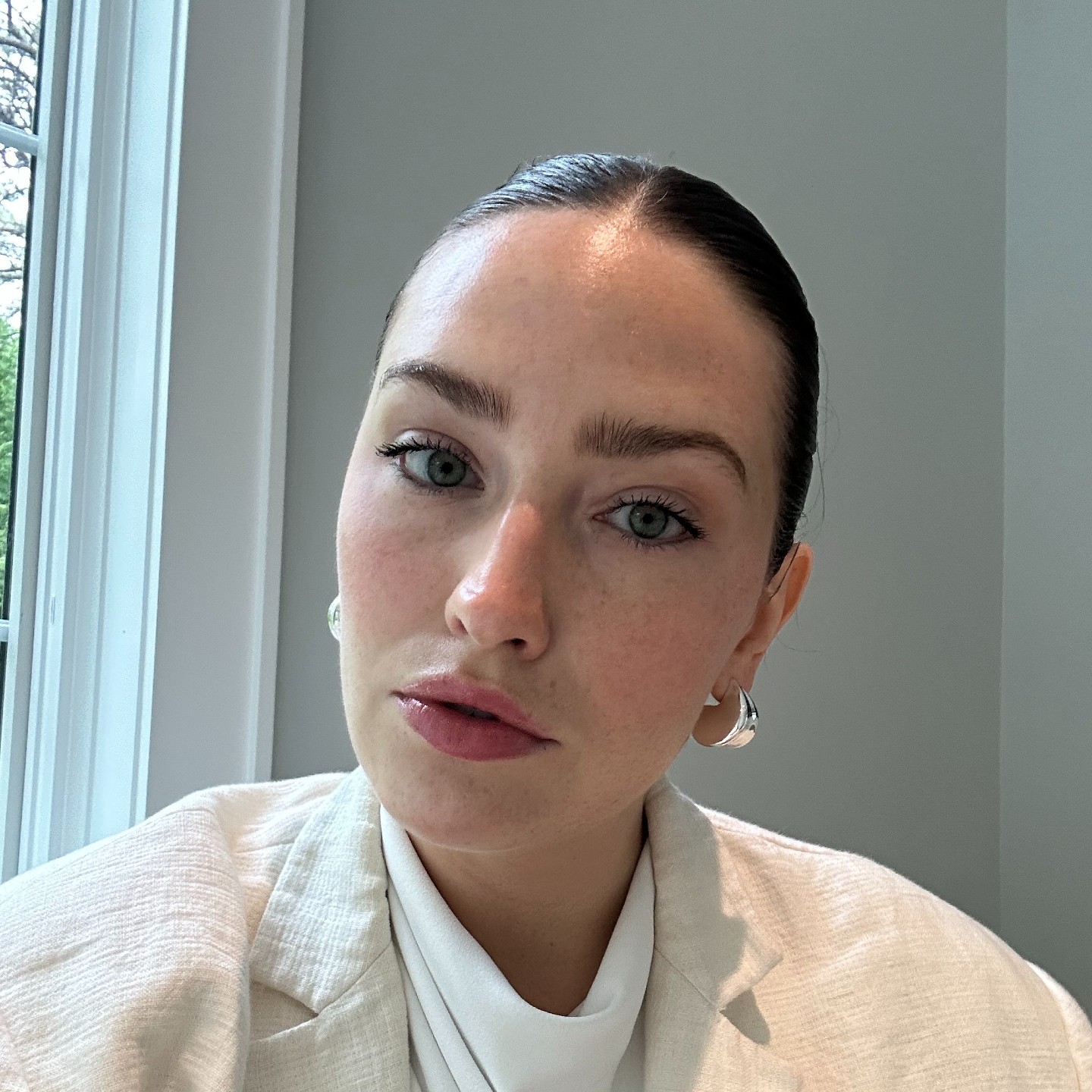 How to Fake the Look of a Spendy Brow Lamination Habit on a Brow Gel Budget
How to Fake the Look of a Spendy Brow Lamination Habit on a Brow Gel BudgetA next-level hack.
-
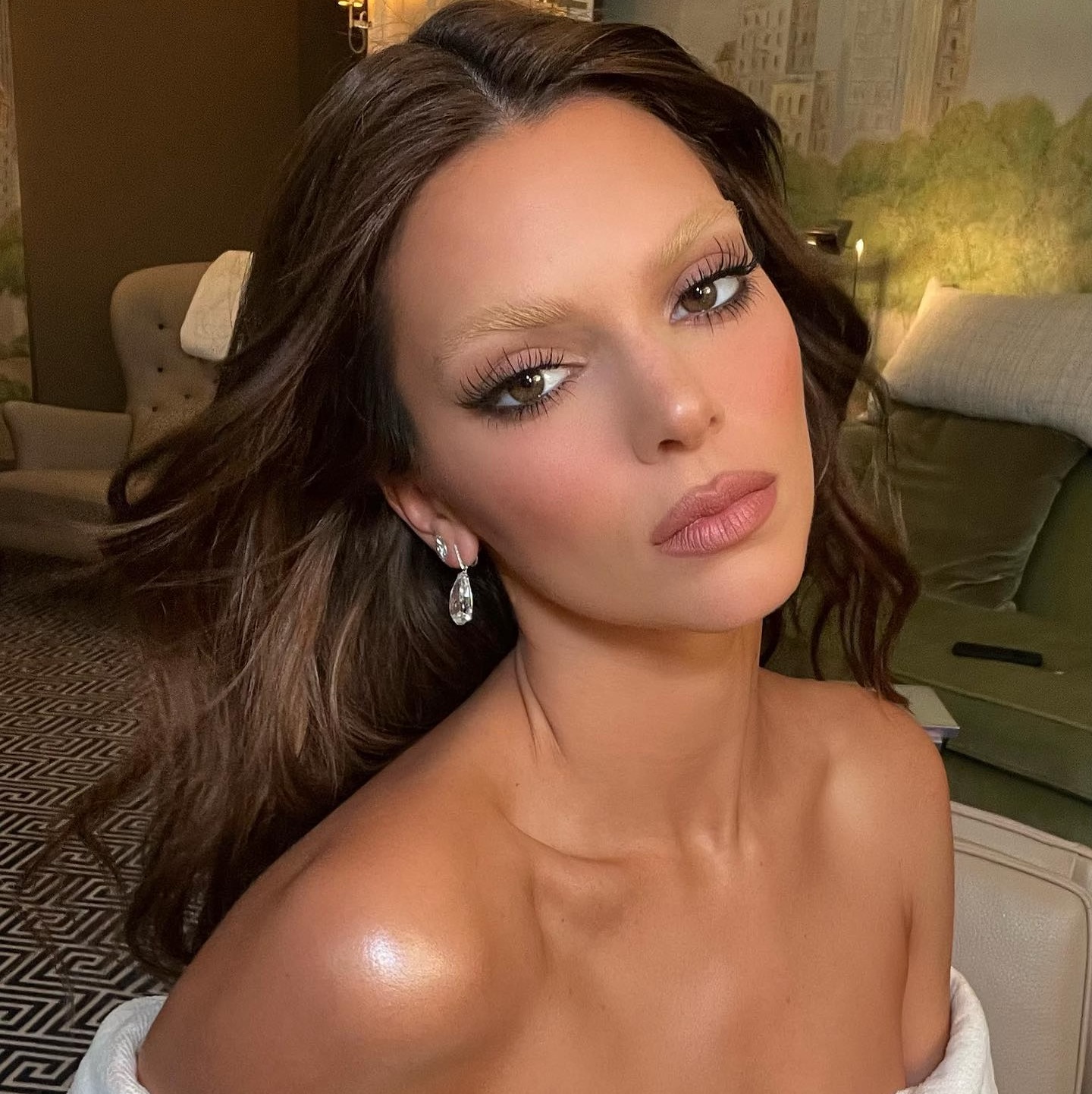 We Asked the Experts, and These 5 Eyebrow Trends Will Be Huge In 2023
We Asked the Experts, and These 5 Eyebrow Trends Will Be Huge In 2023There's something for everyone.
-
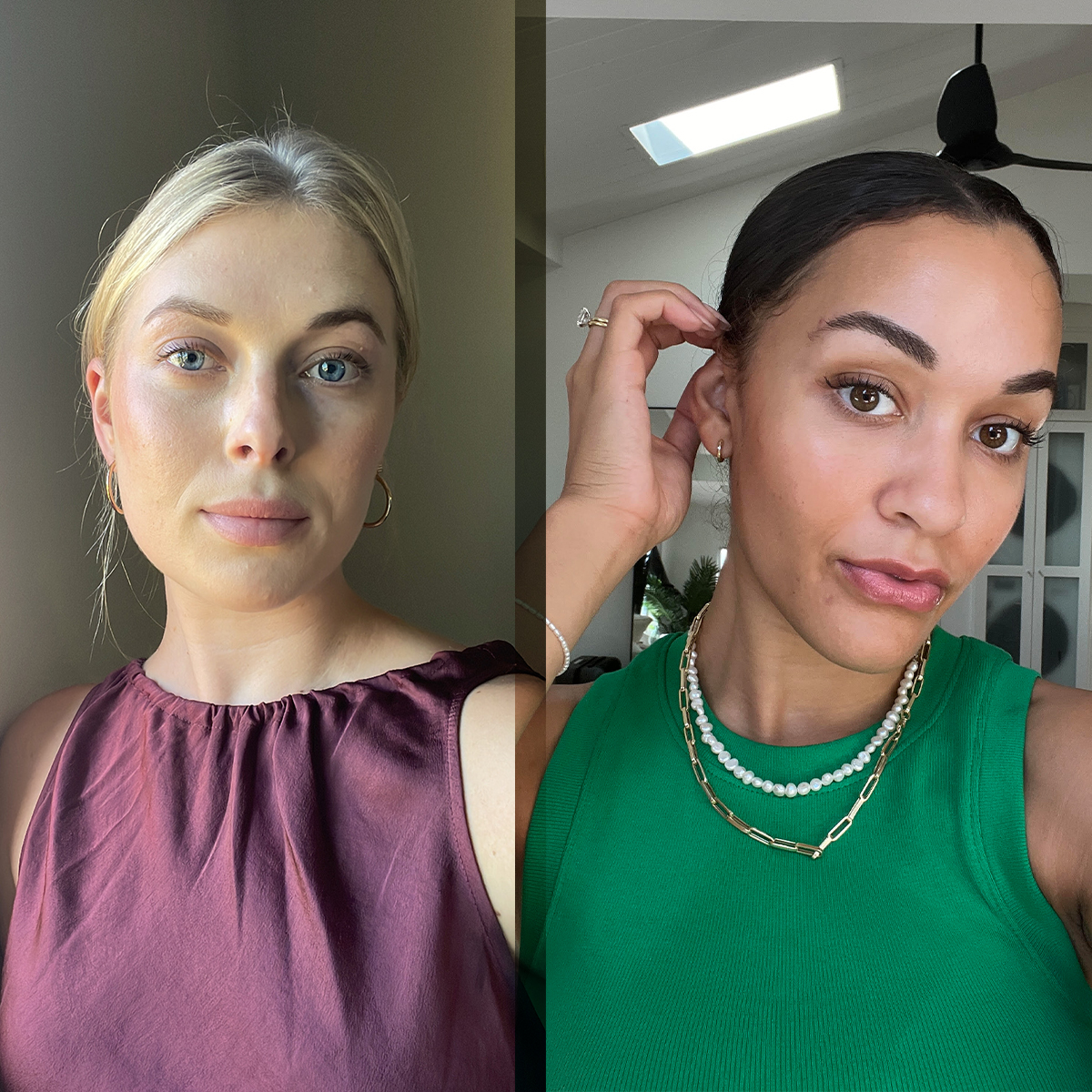 I'm Officially in a Committed Relationship With This New Brow Duo—Here's the 411
I'm Officially in a Committed Relationship With This New Brow Duo—Here's the 411We're pretty exclusive.
-
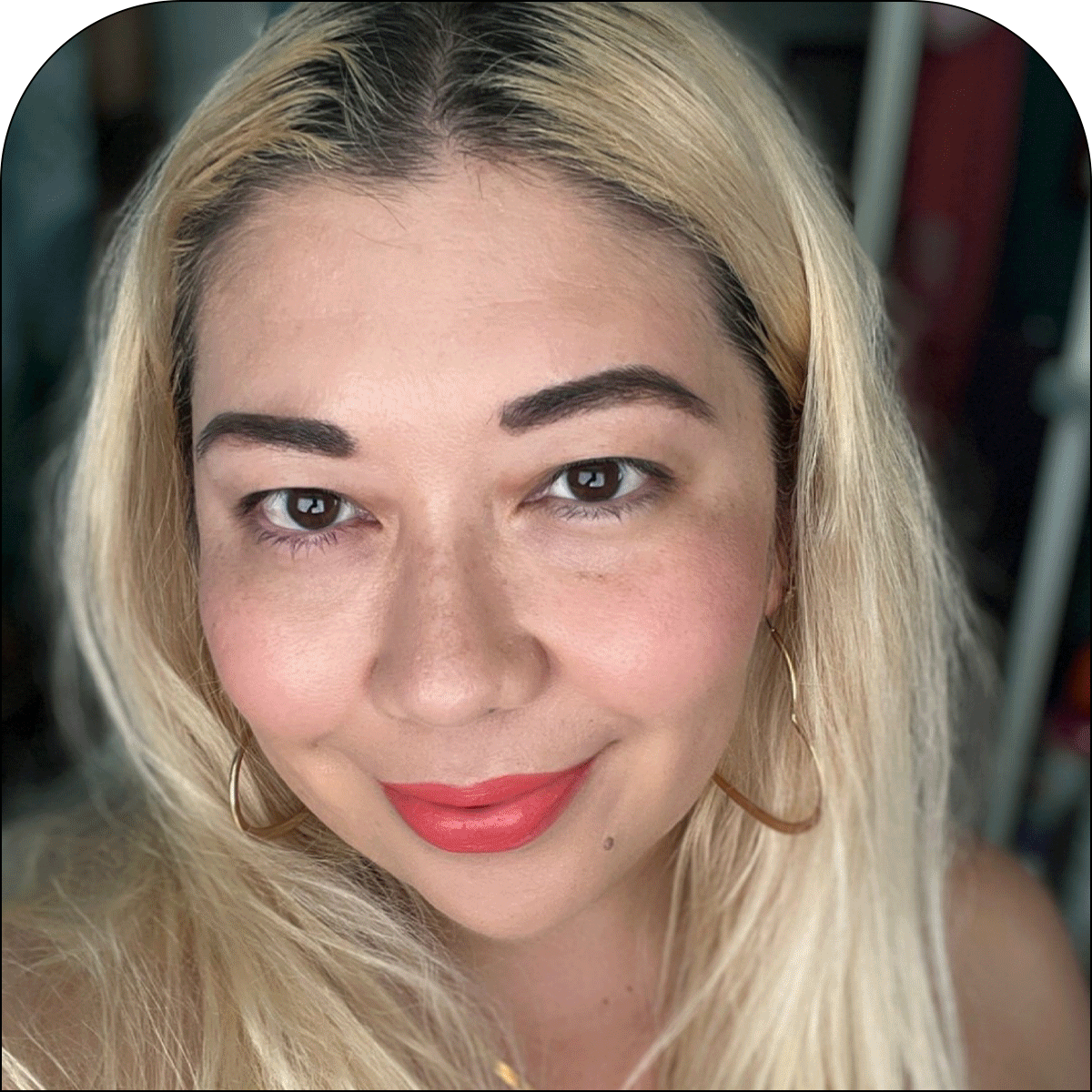 My Eyebrows Haven't Been Touched Since 2019, so I Tried Anastasia's Golden Ratio
My Eyebrows Haven't Been Touched Since 2019, so I Tried Anastasia's Golden RatioI mean, it's iconic.
-
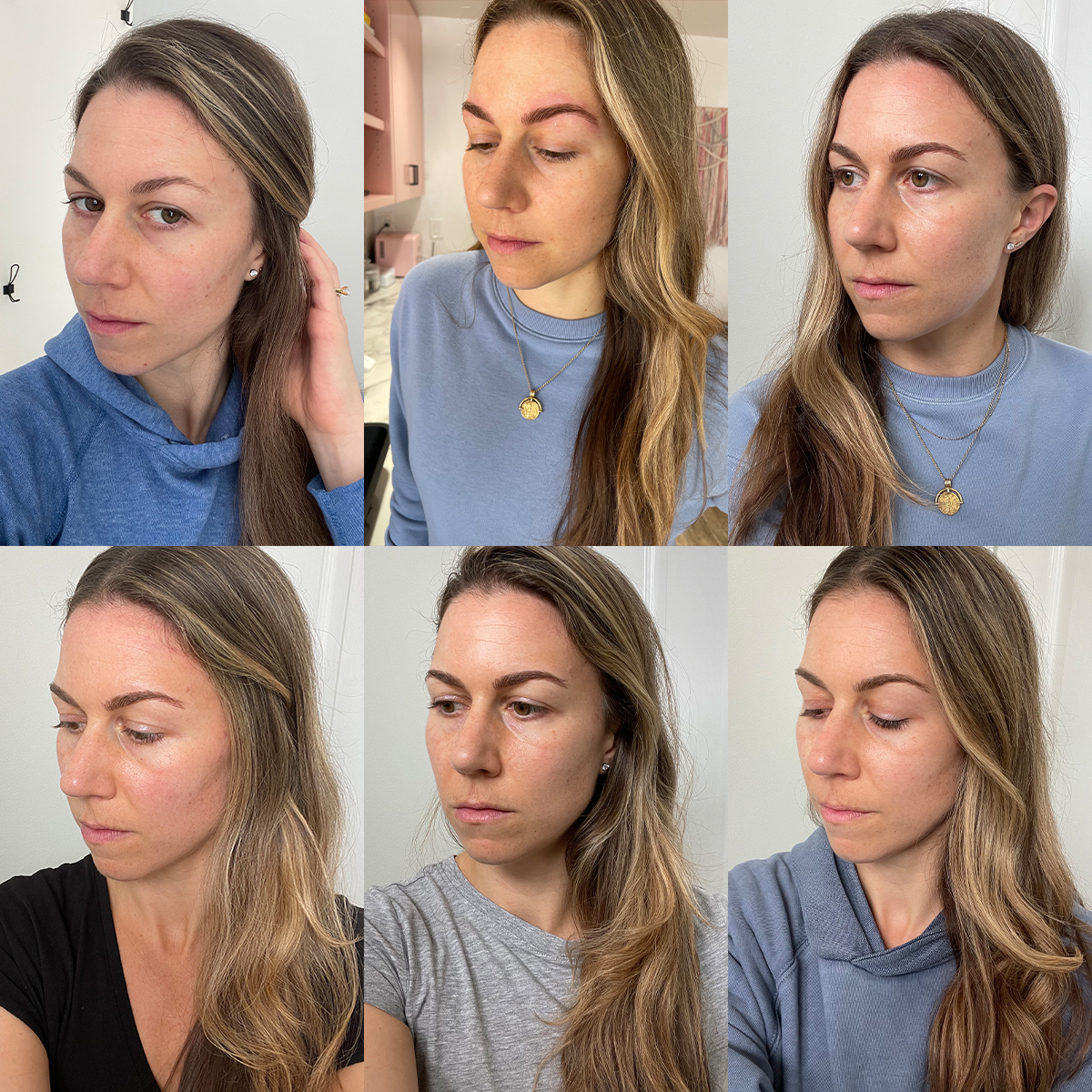 If You're Tired of Filling in Your Brows (or Really Bad at It), Read This
If You're Tired of Filling in Your Brows (or Really Bad at It), Read ThisGame-changing.
-
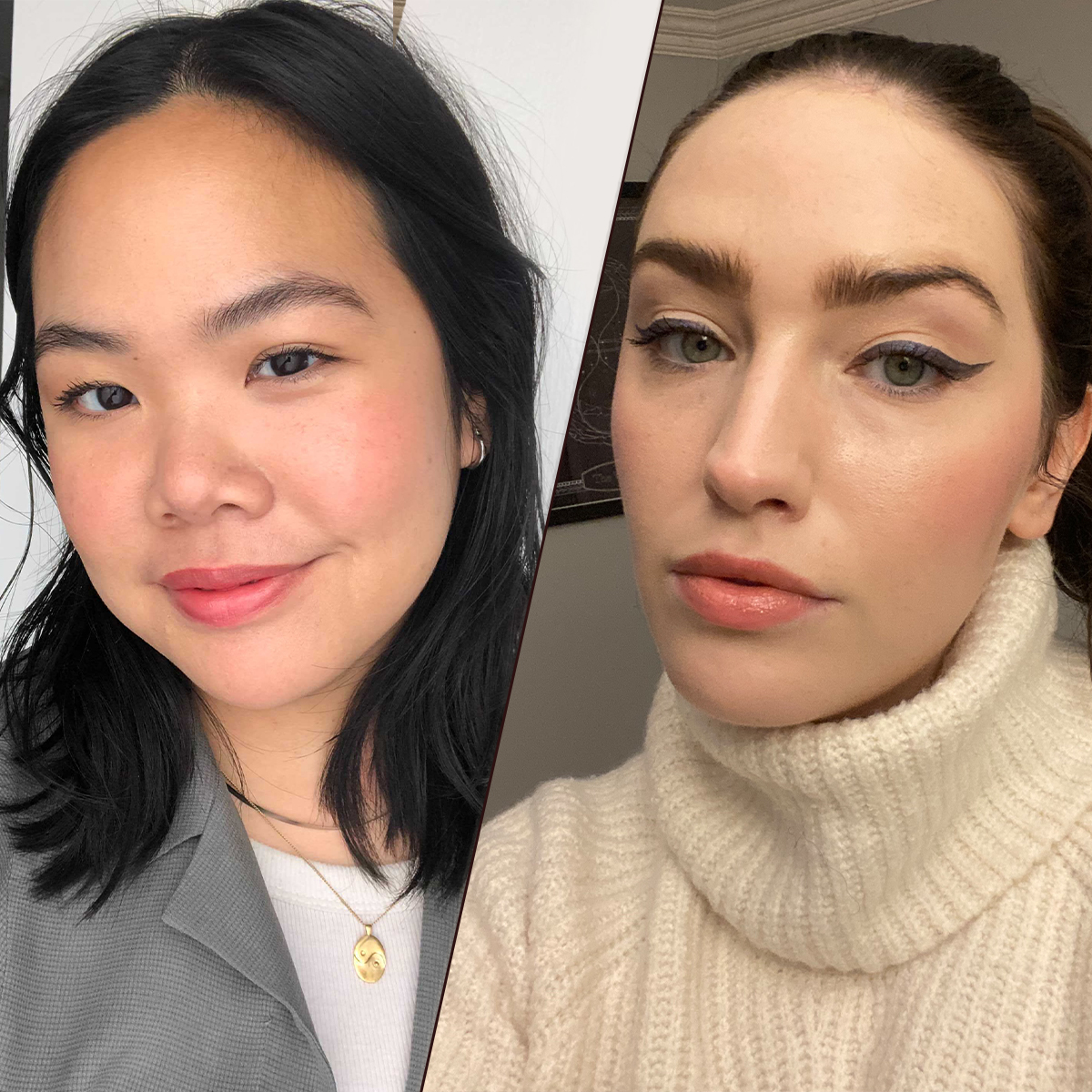 I Heard This Brow Pencil Magically Looks Good on Everyone, so 9 Editors Tried It
I Heard This Brow Pencil Magically Looks Good on Everyone, so 9 Editors Tried ItNot an ad. We're just genuinely obsessed.
-
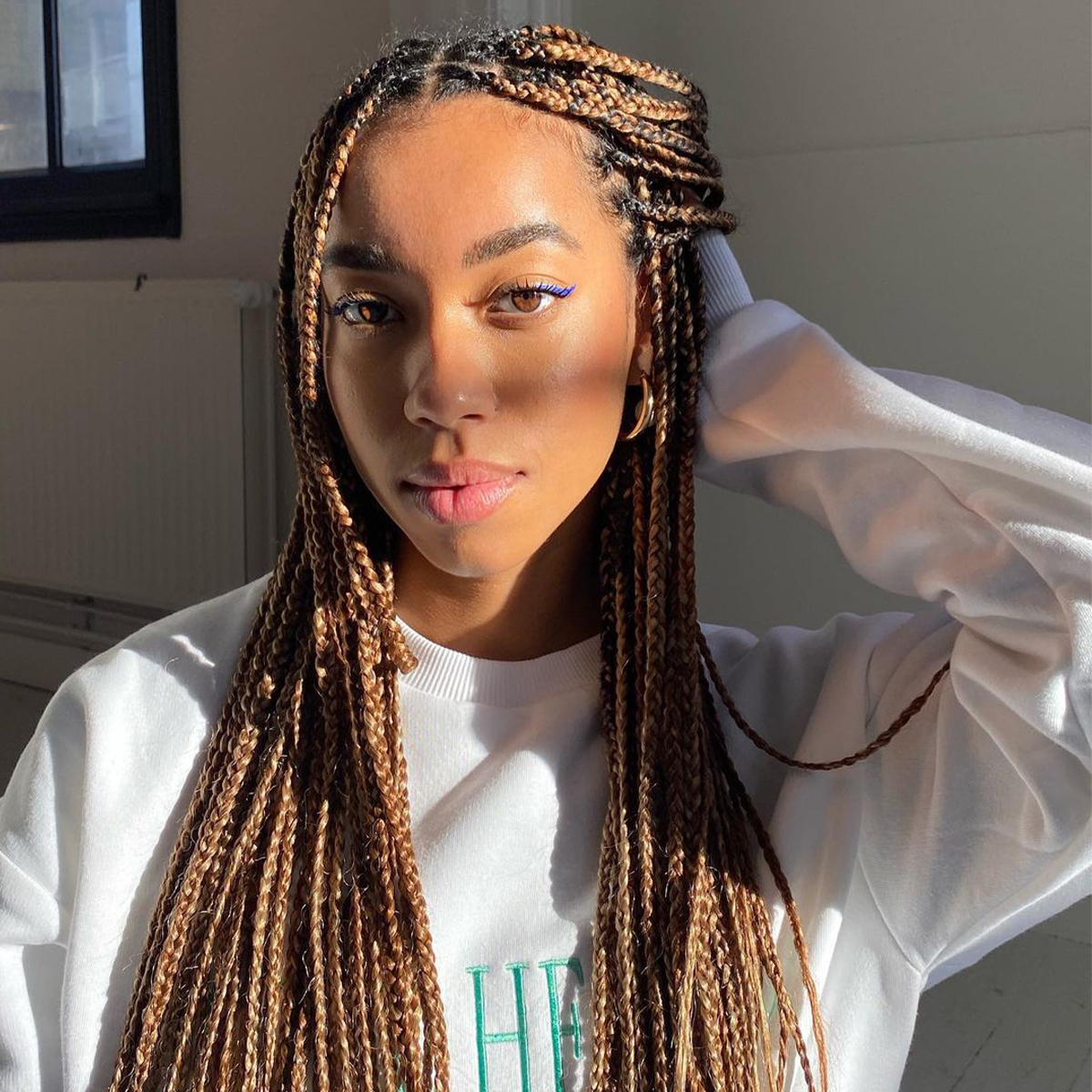 10 Beloved Makeup Products That Live Up to the Hype
10 Beloved Makeup Products That Live Up to the HypeThe reviews are in.
